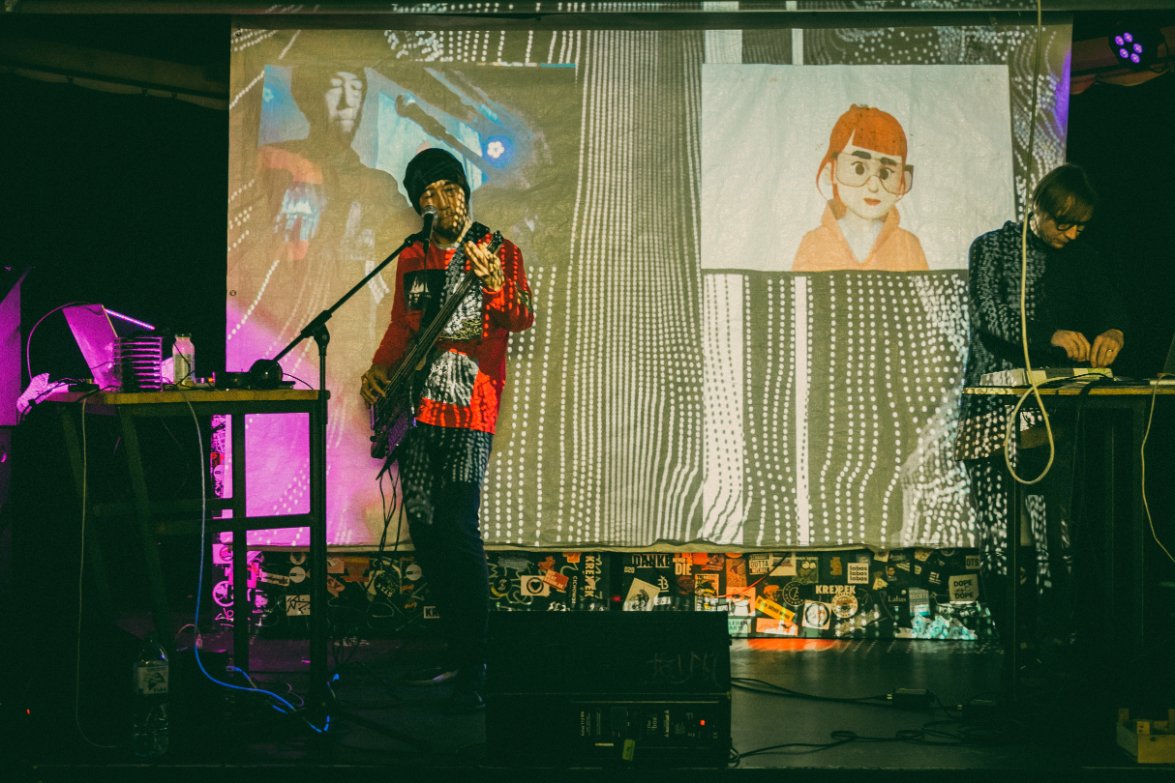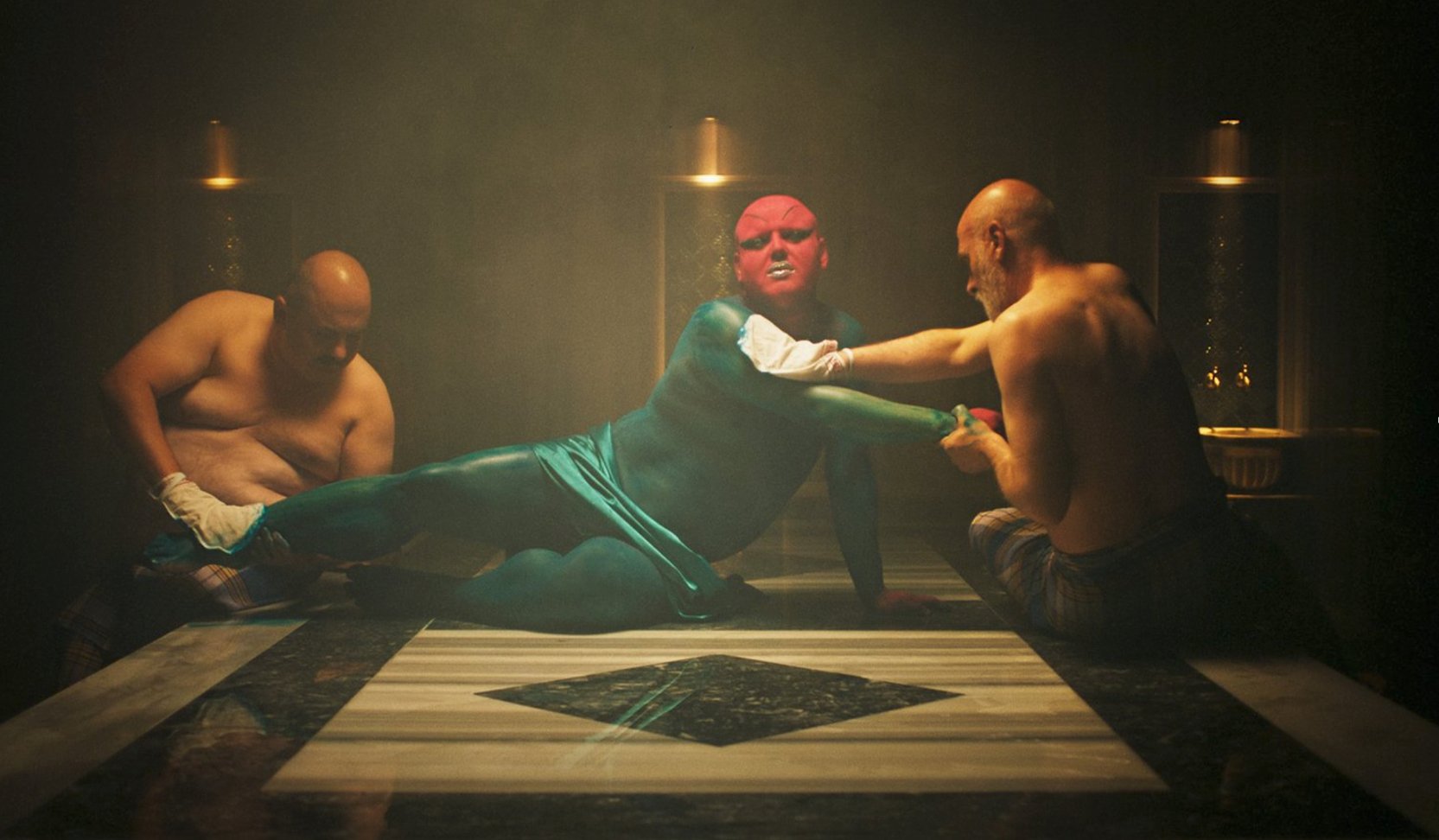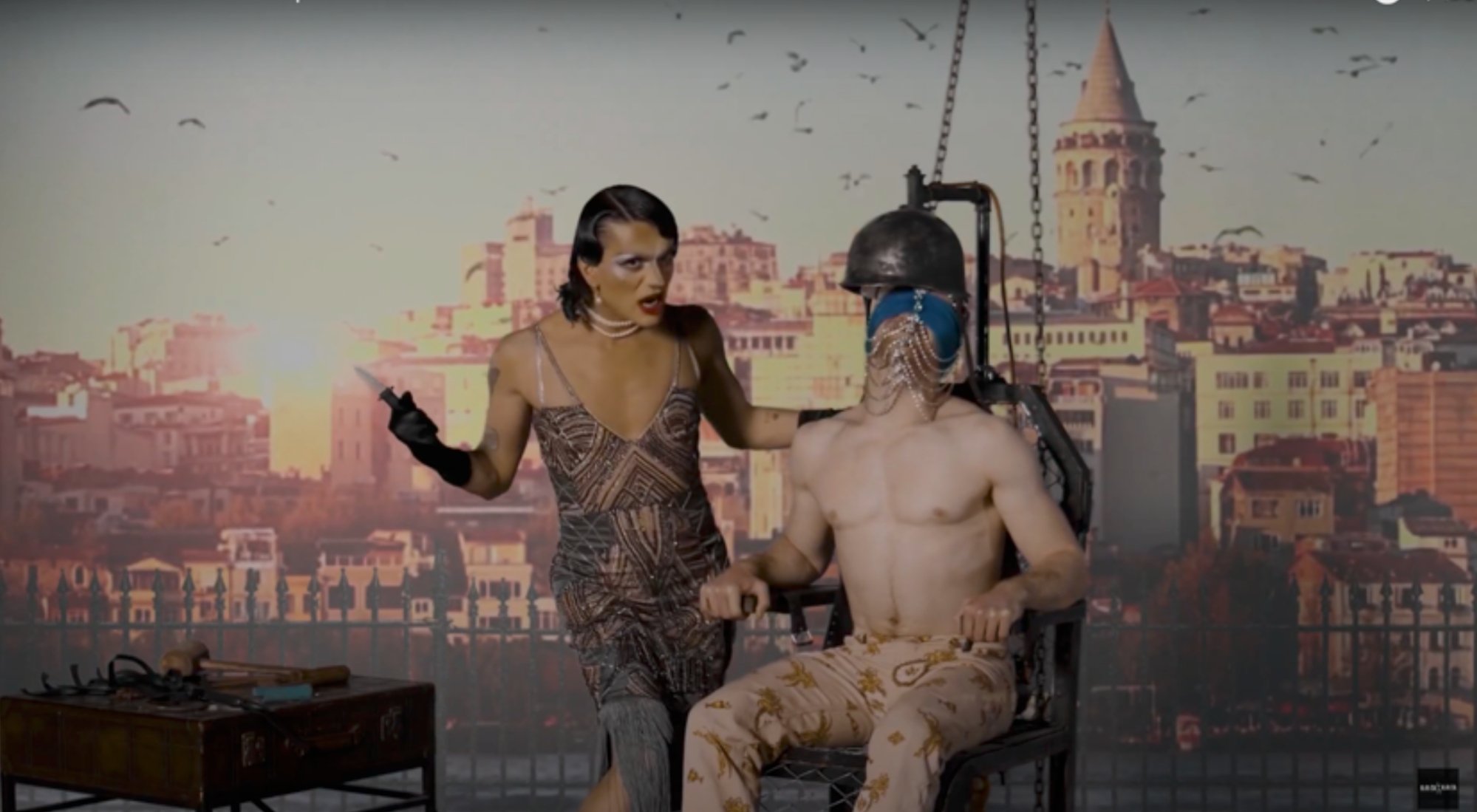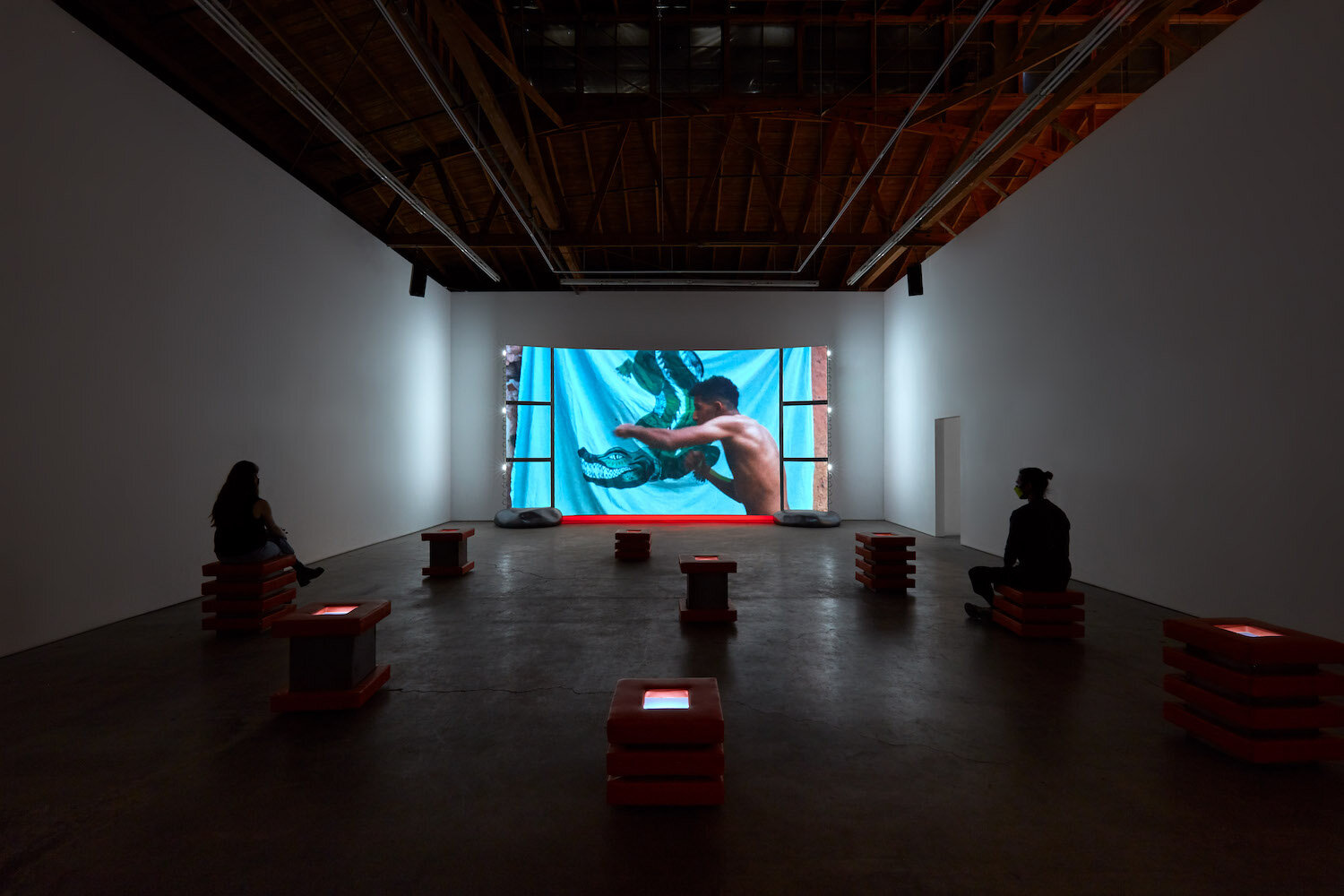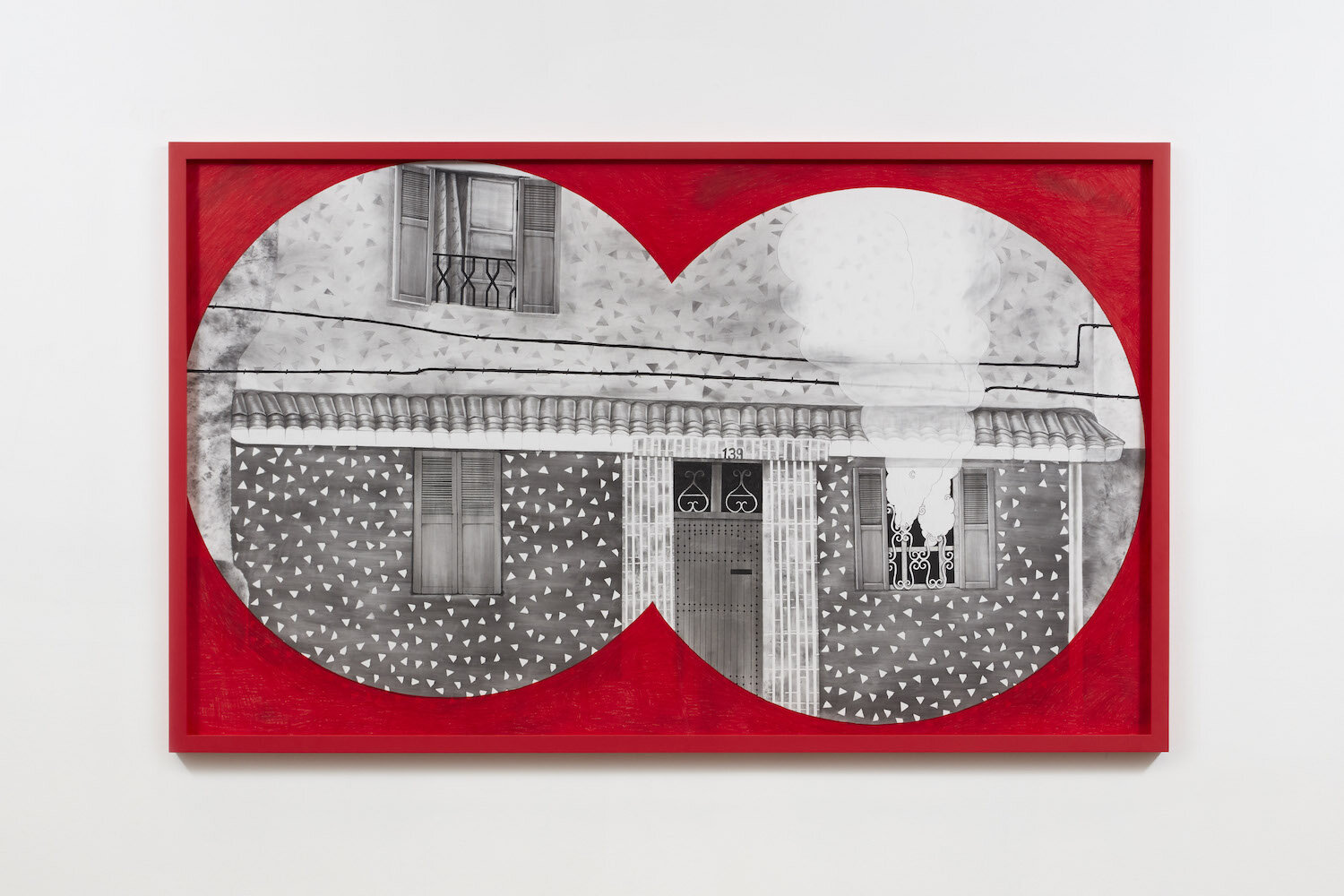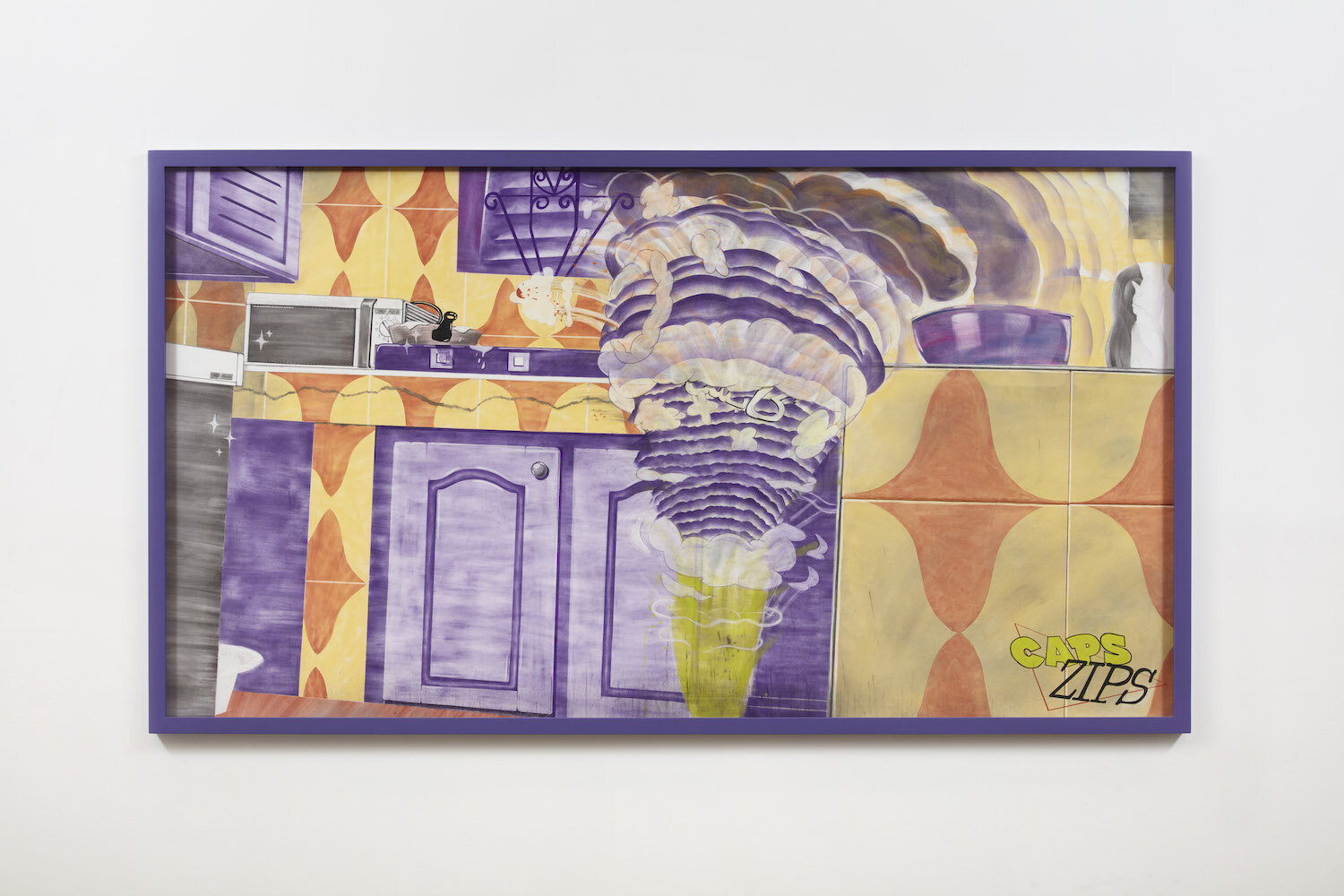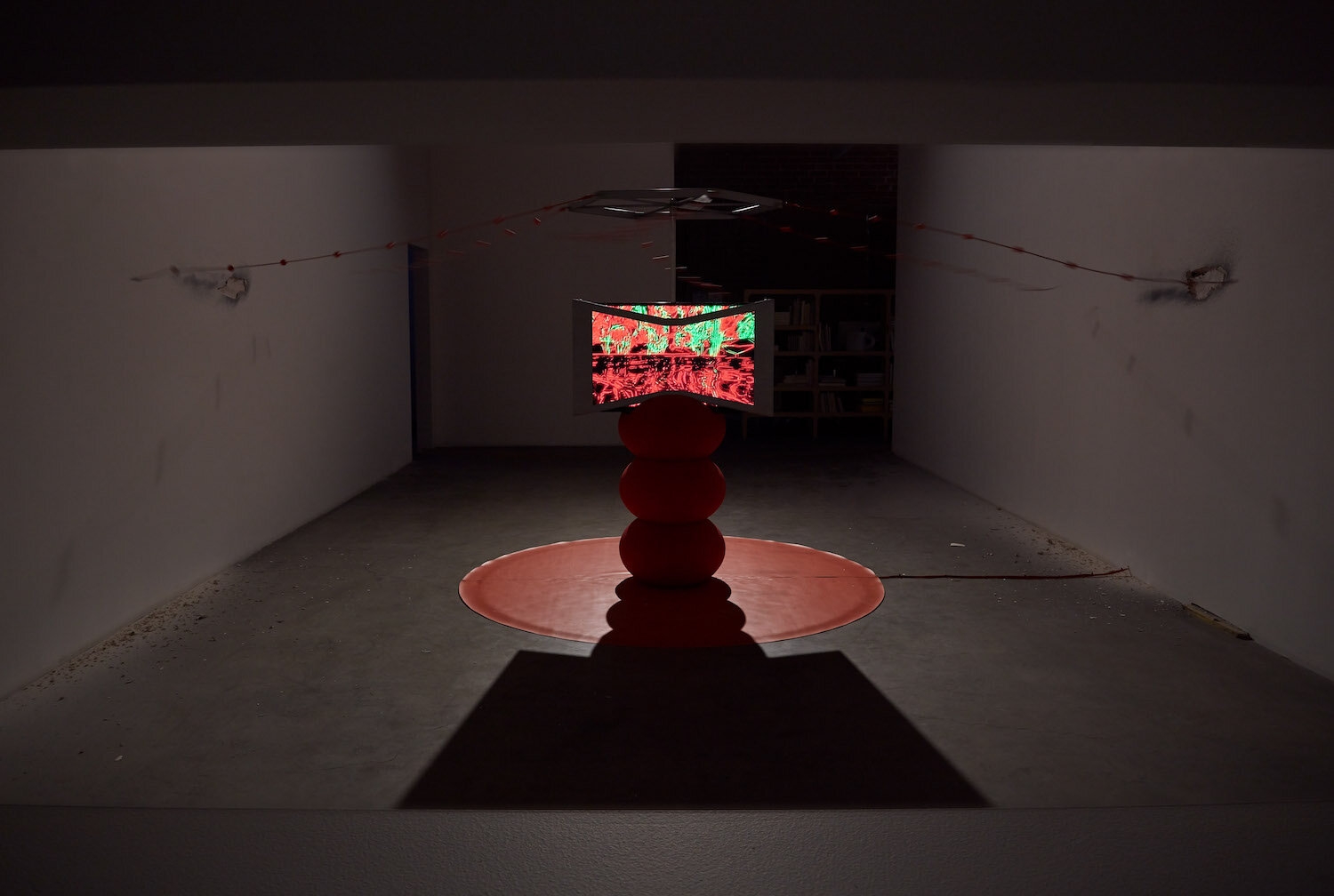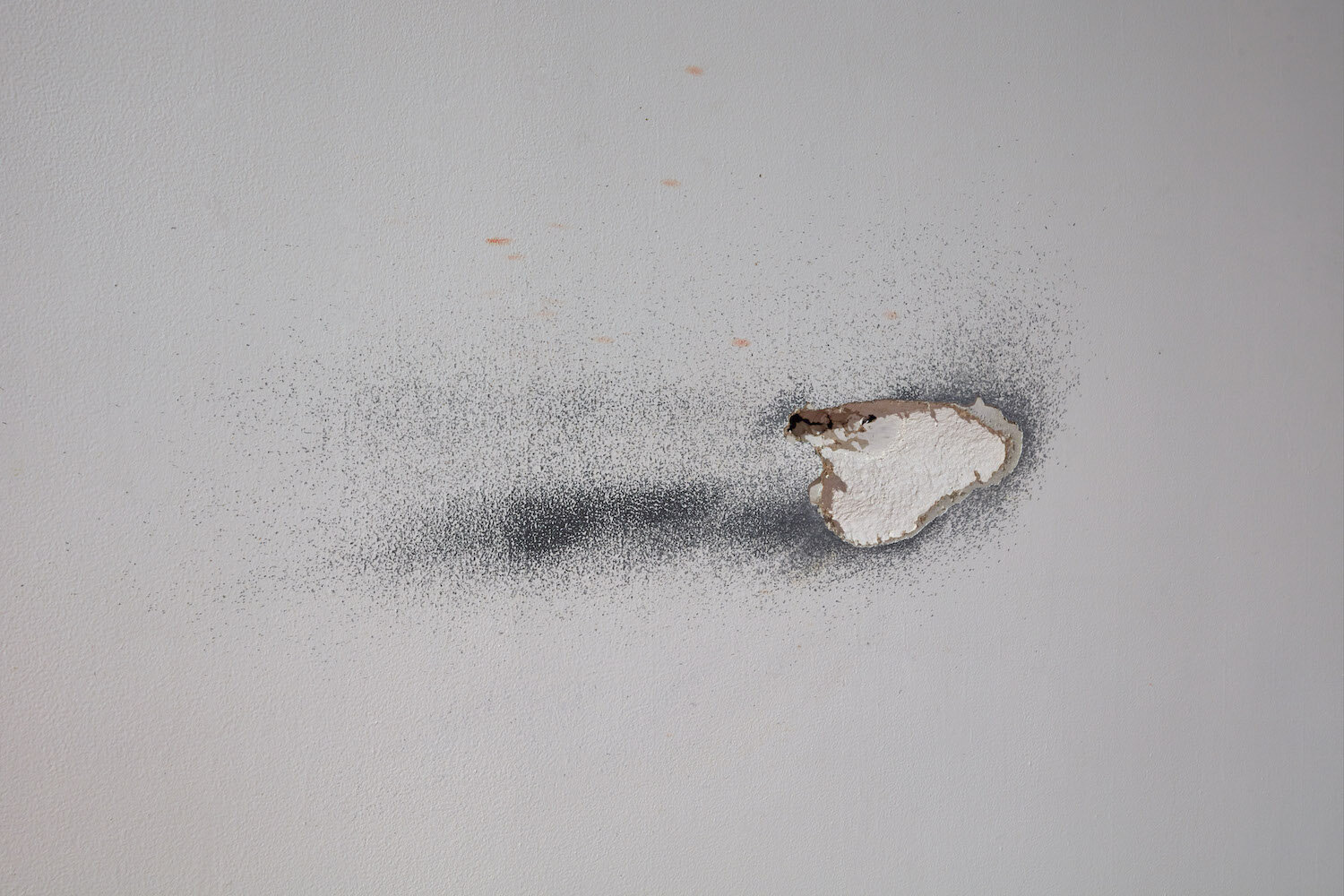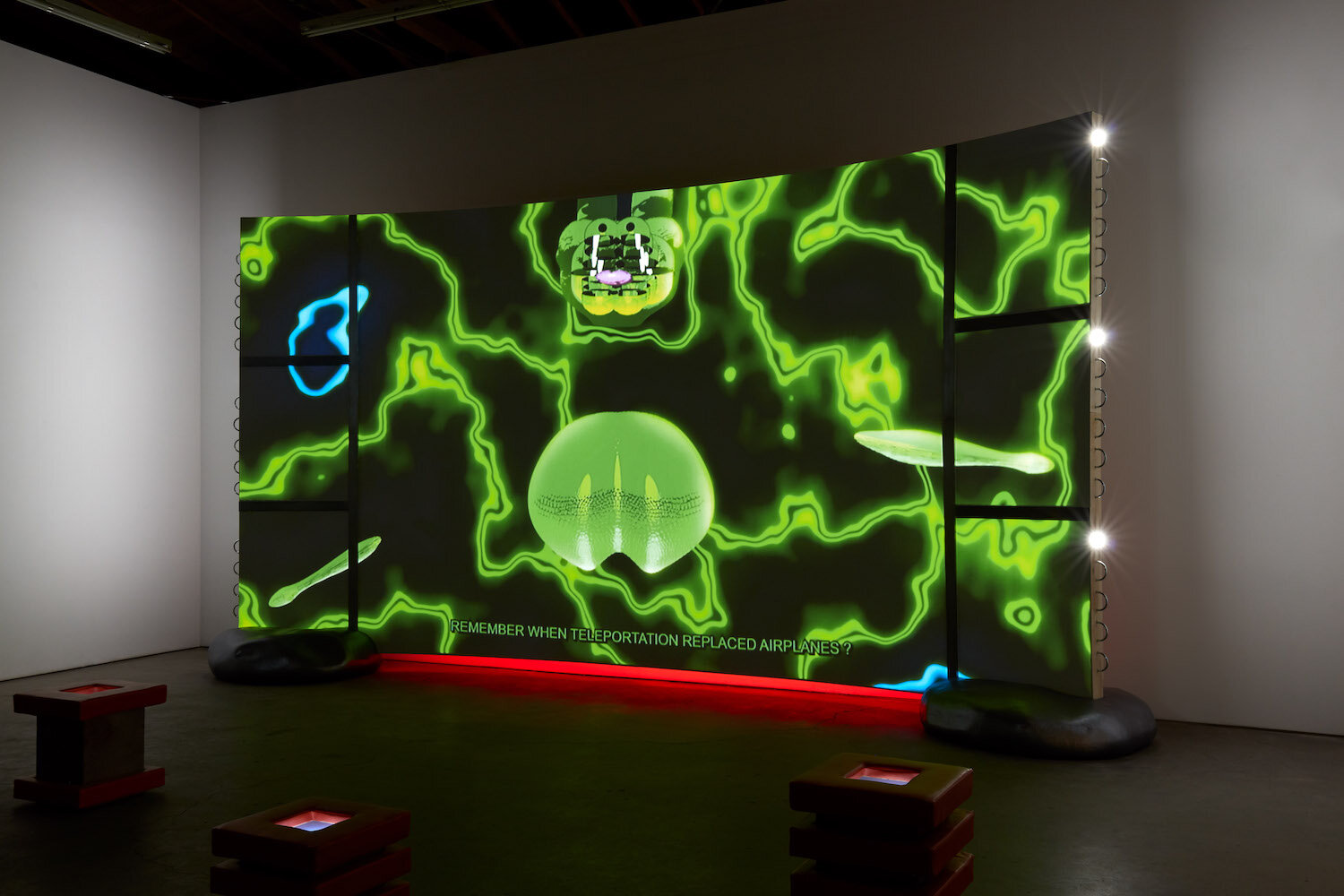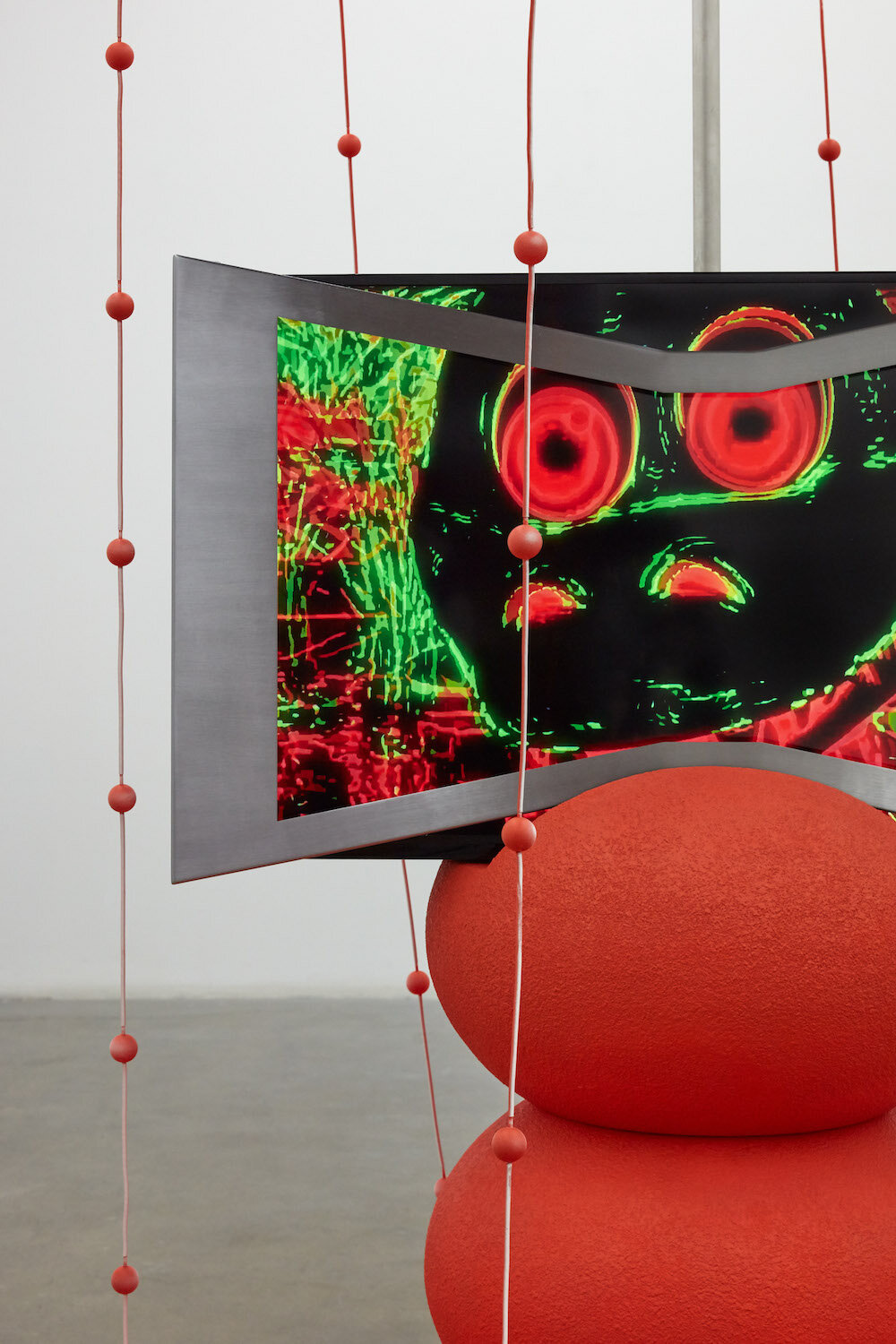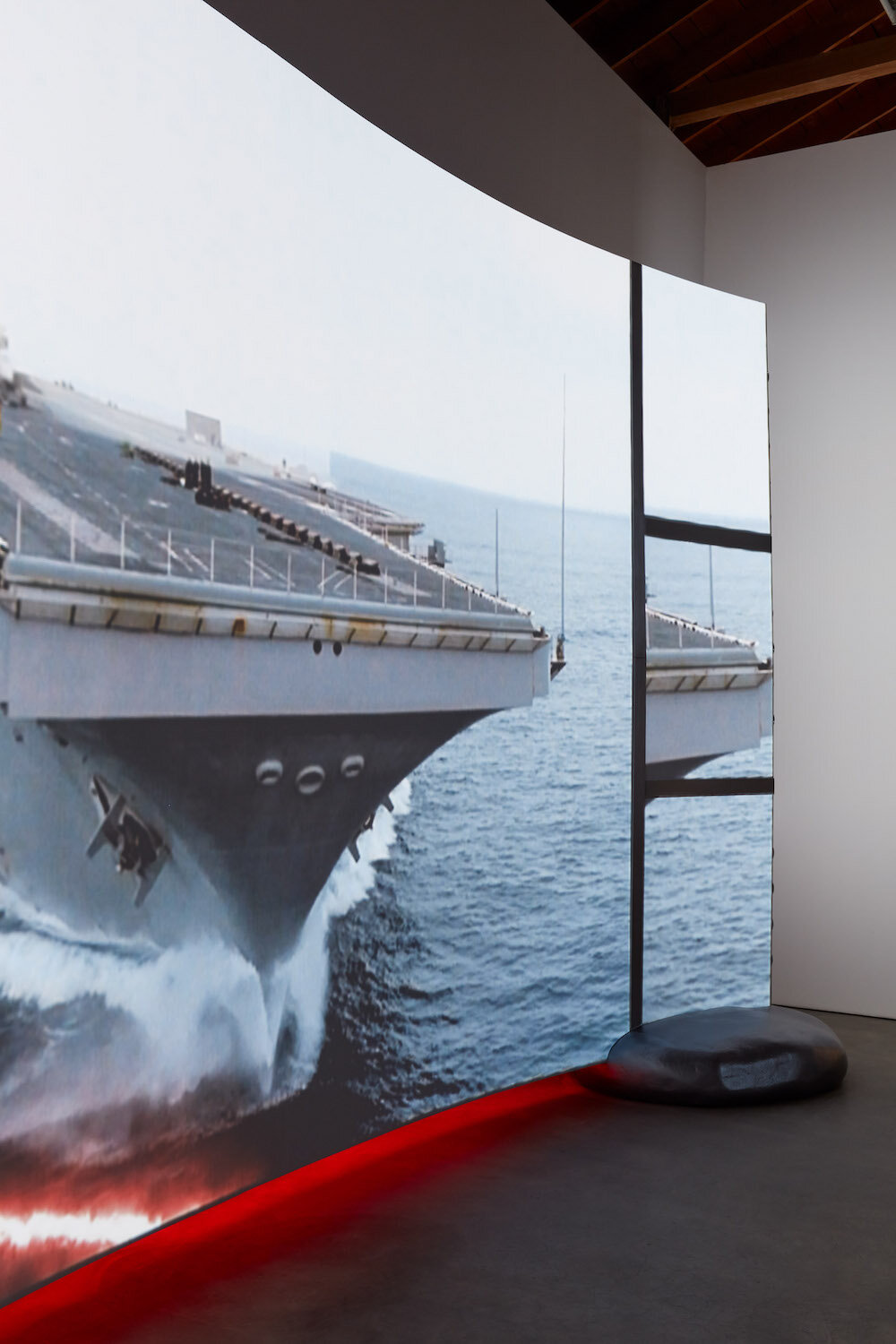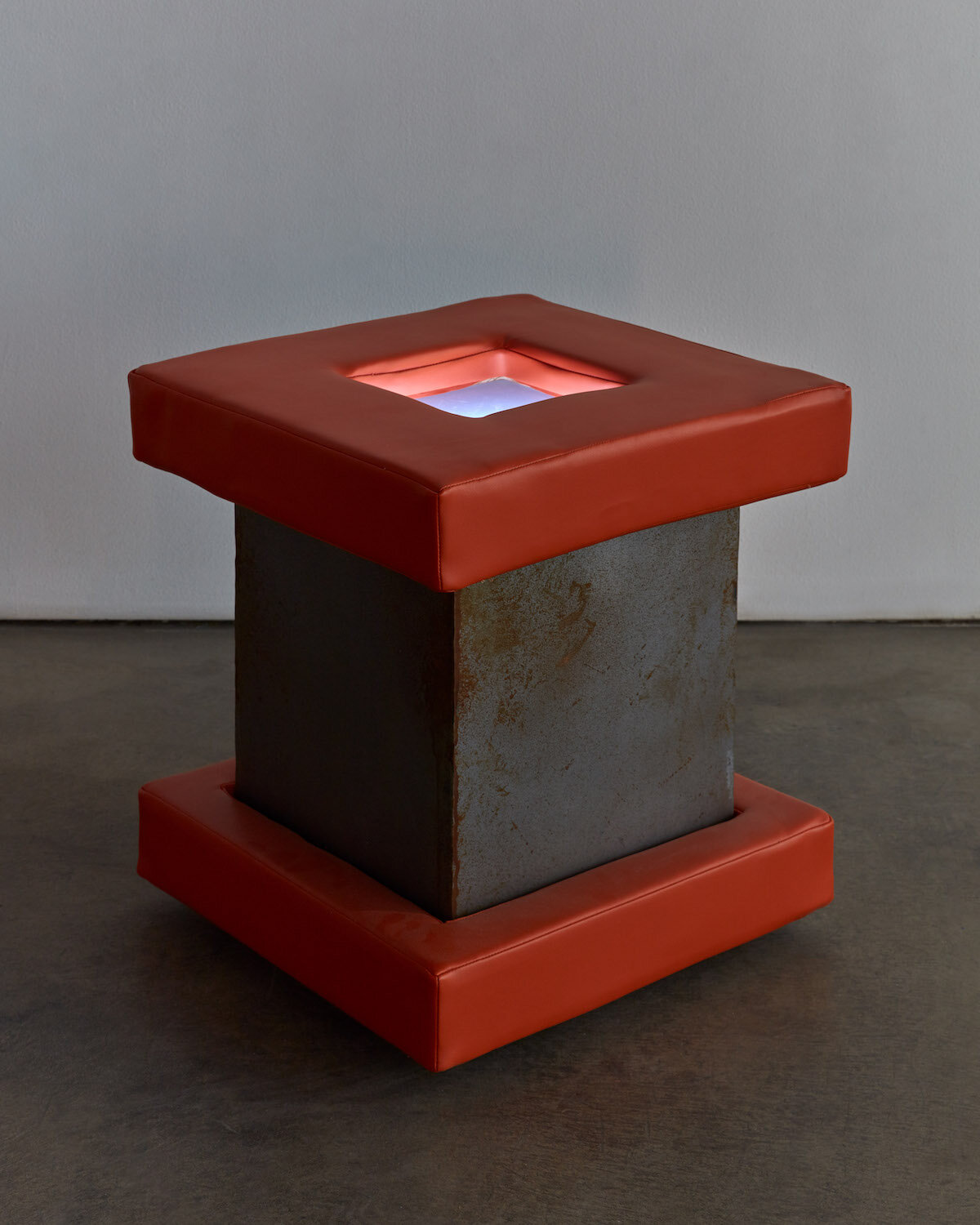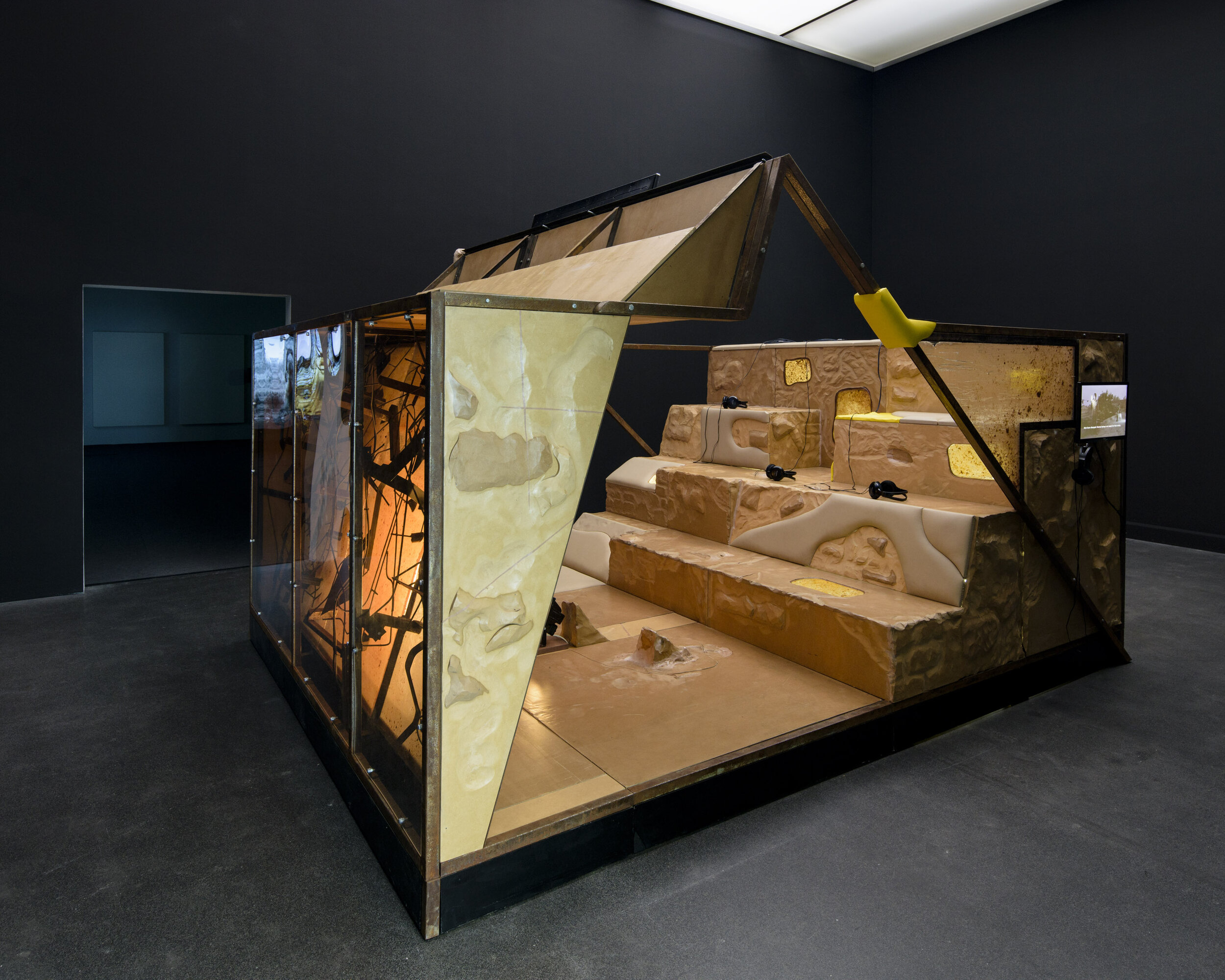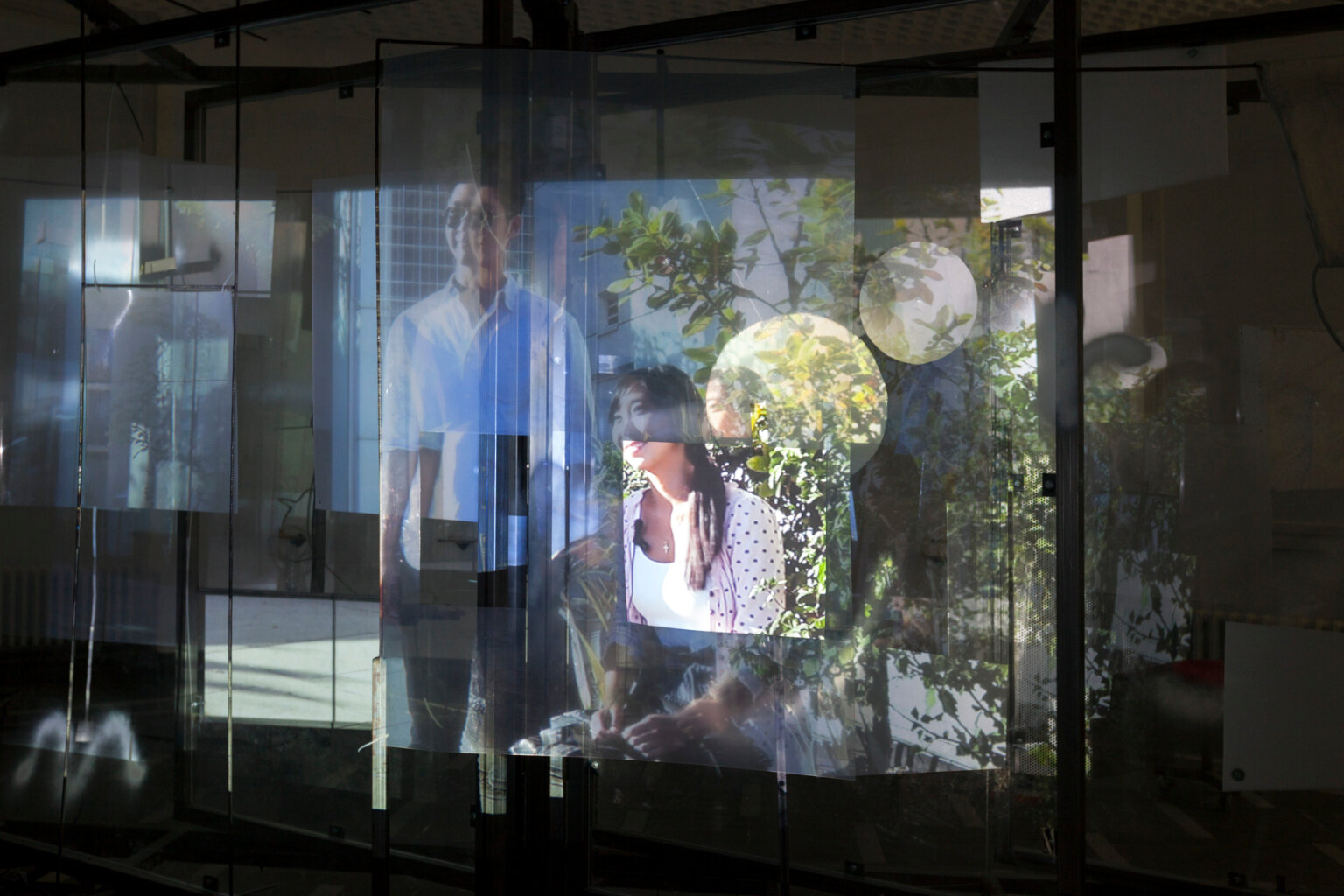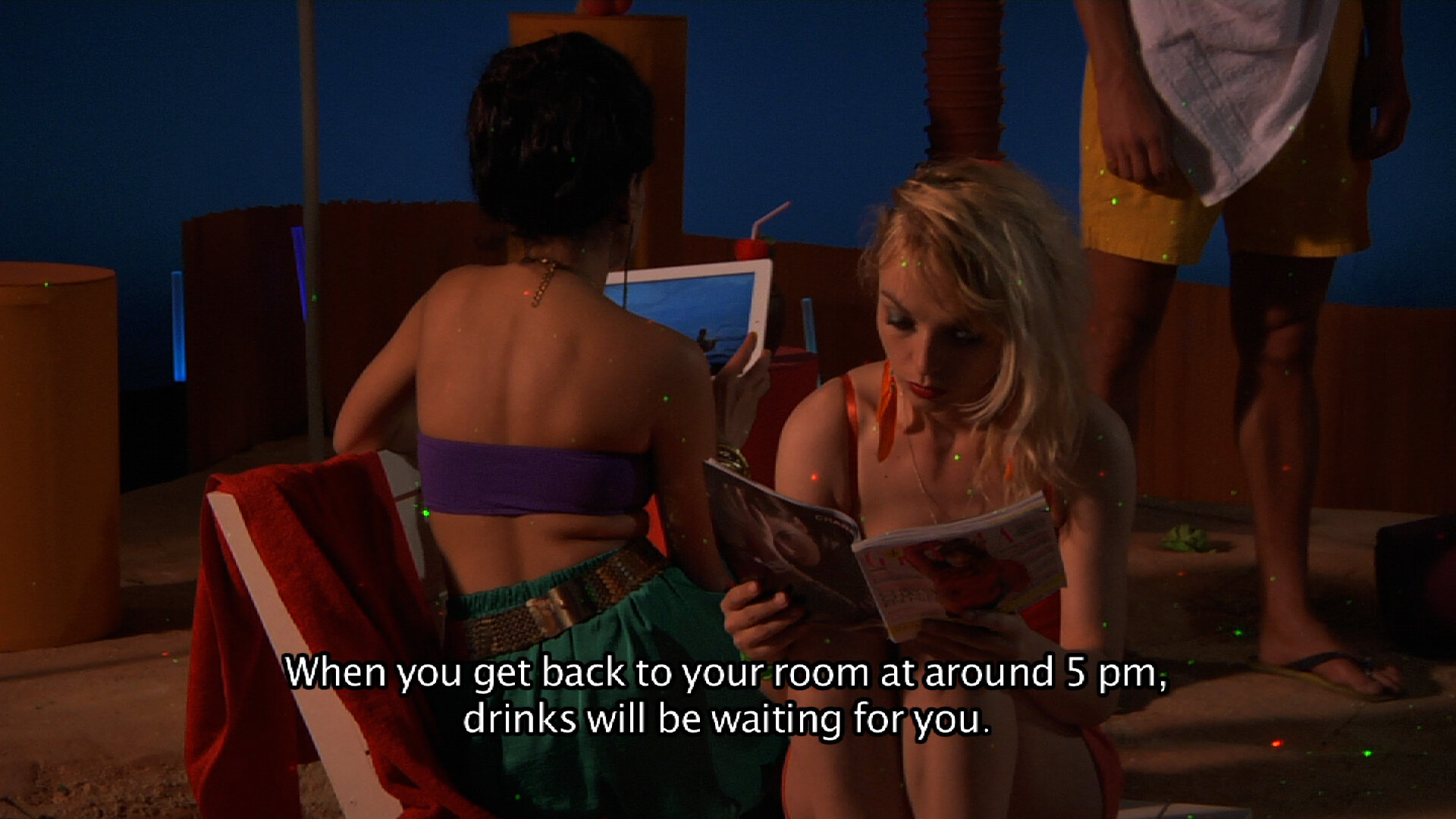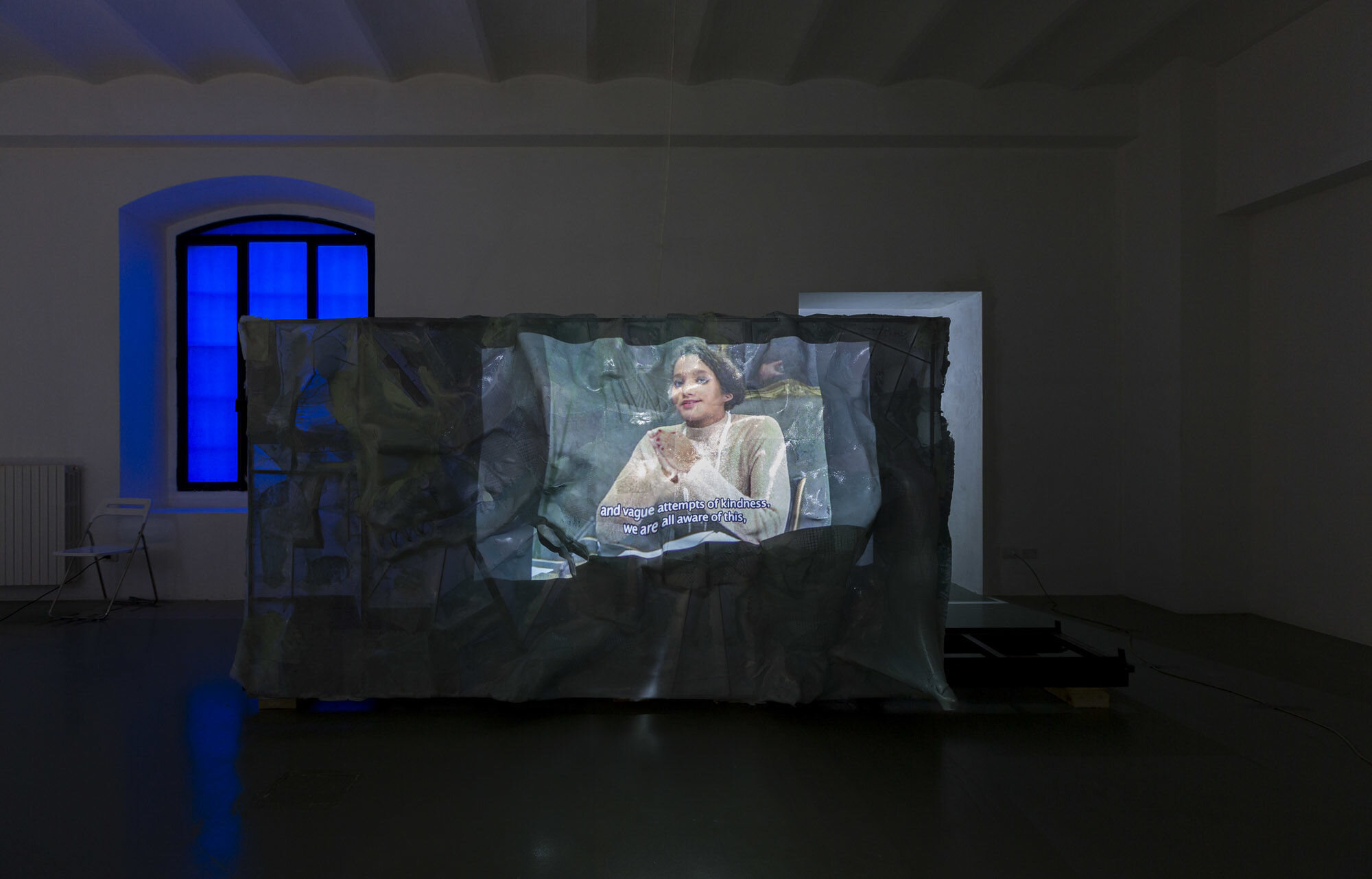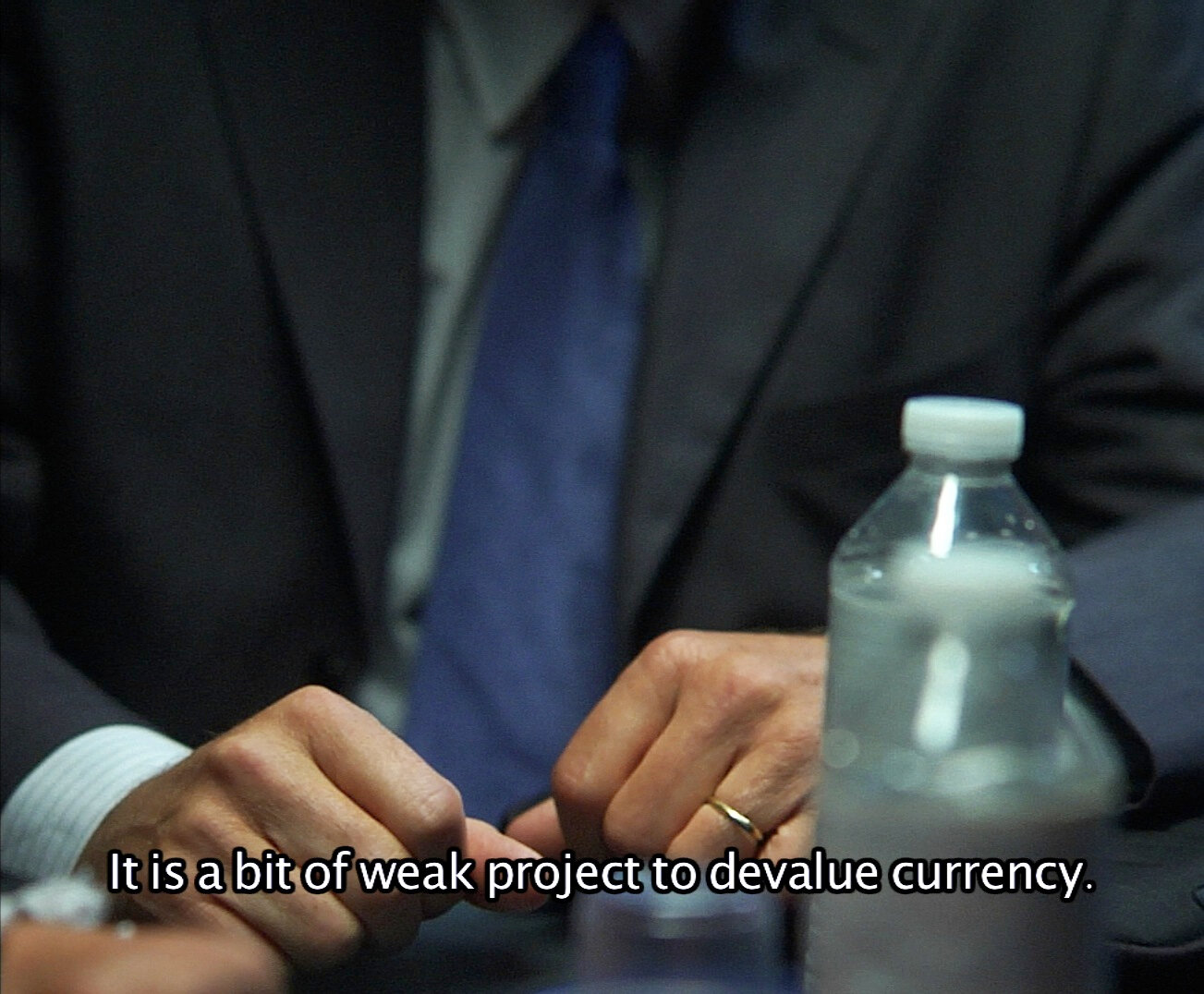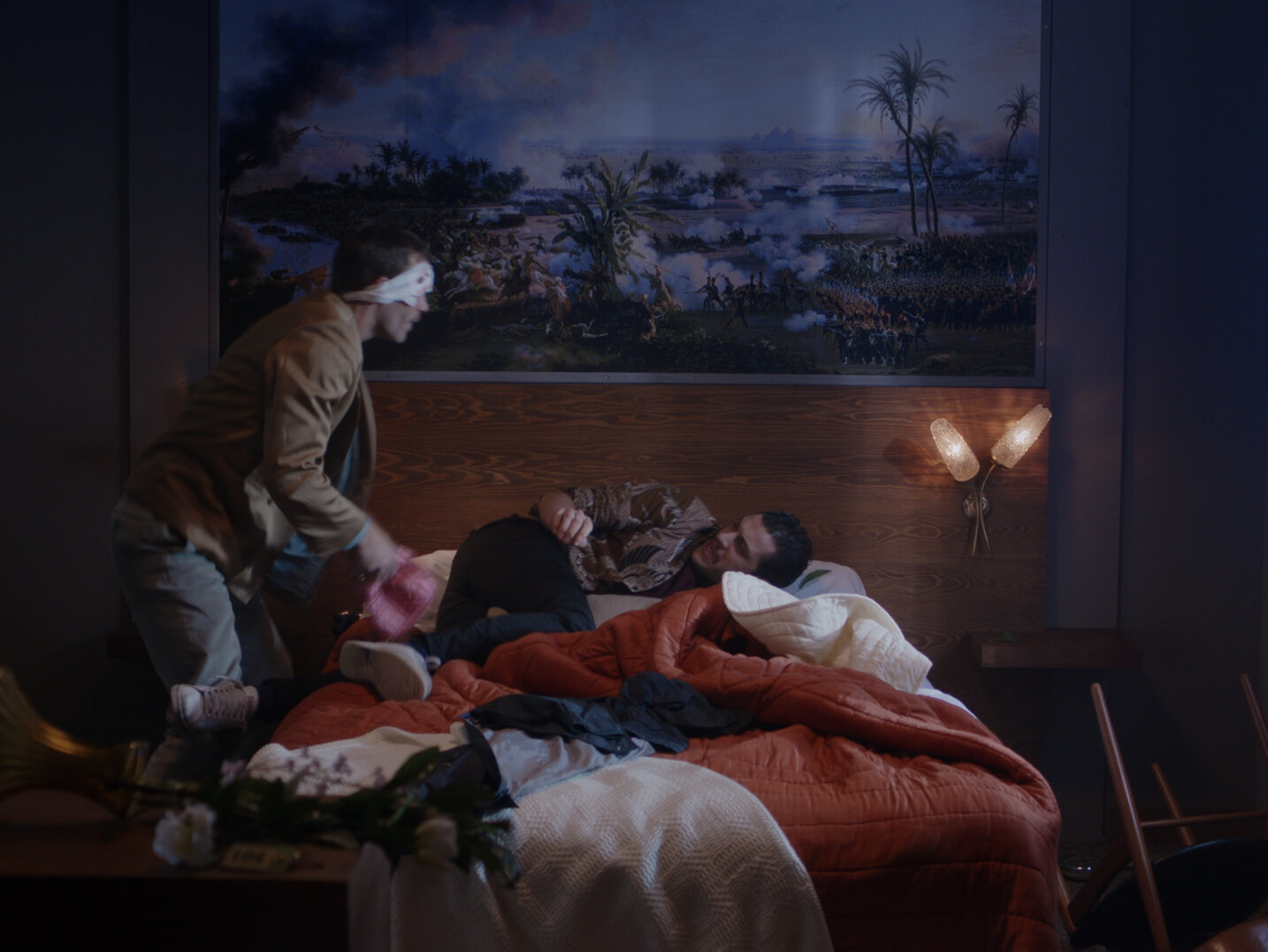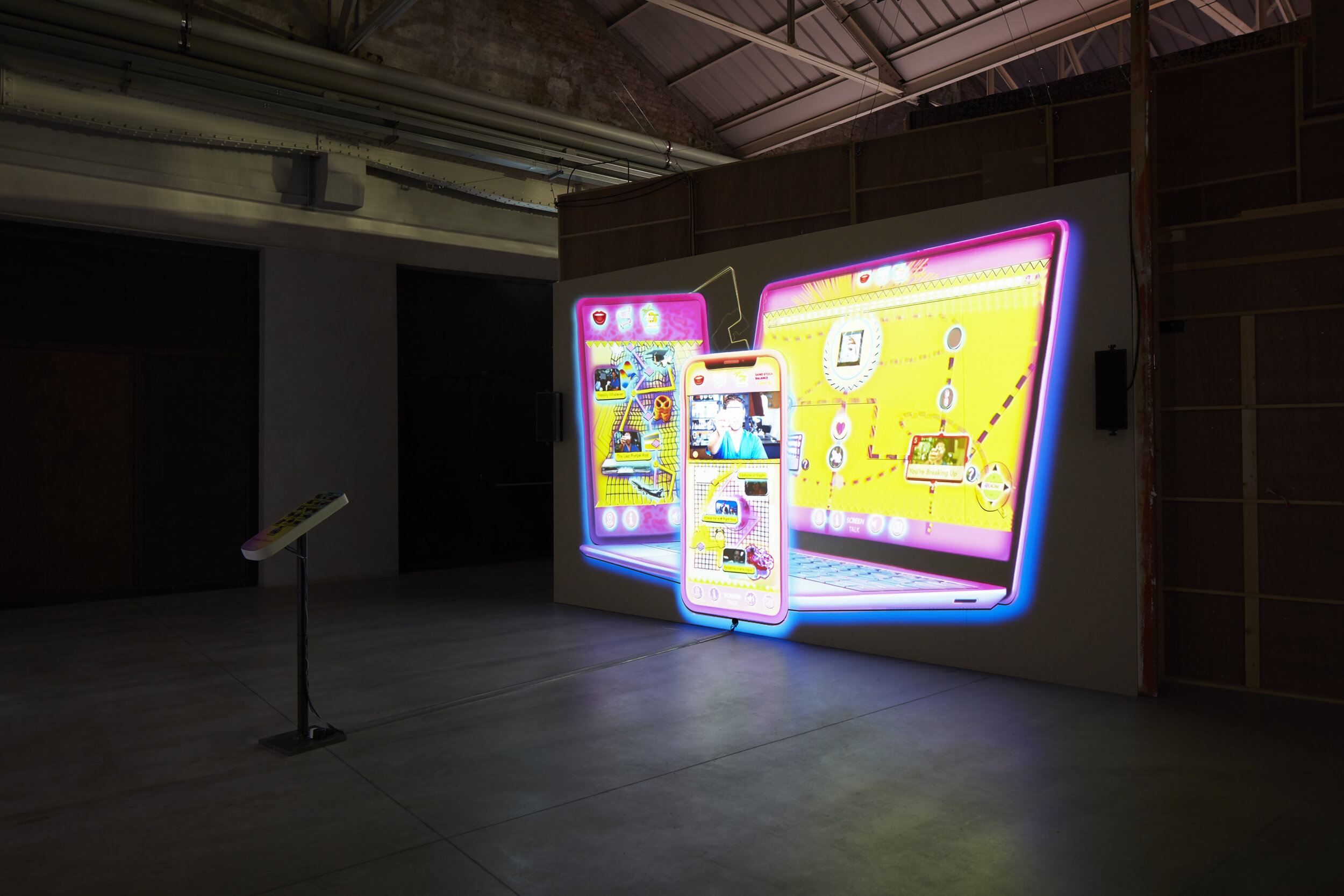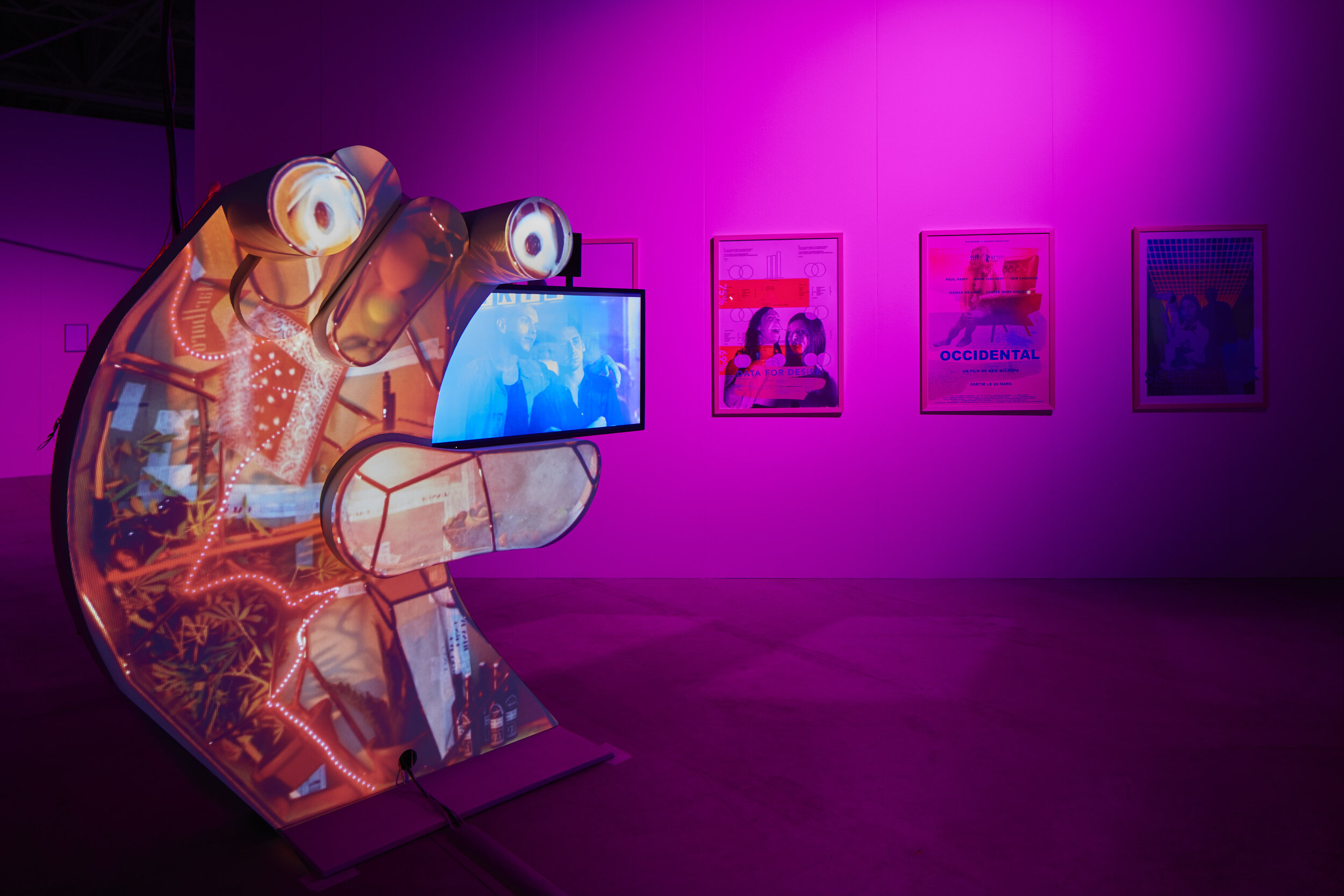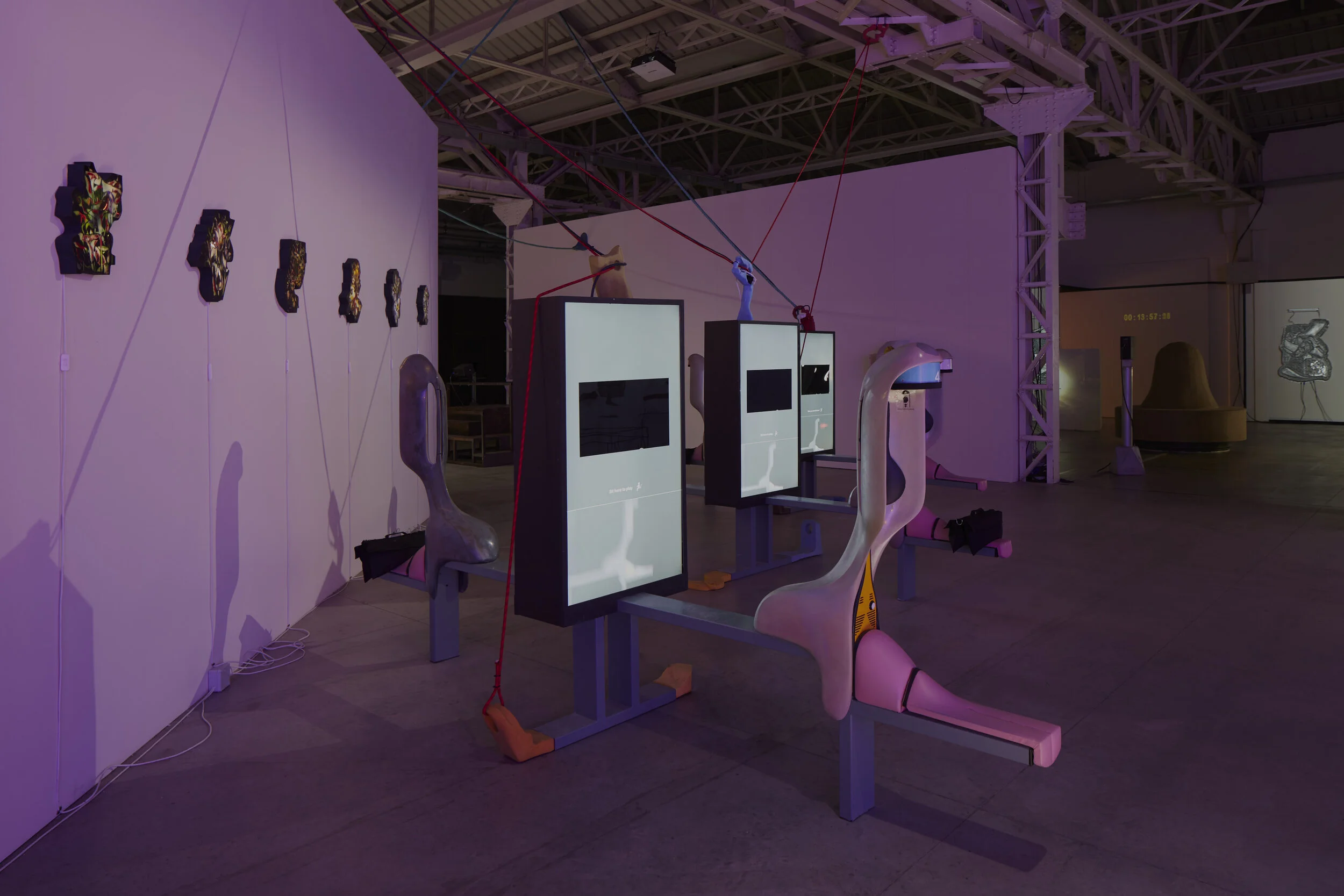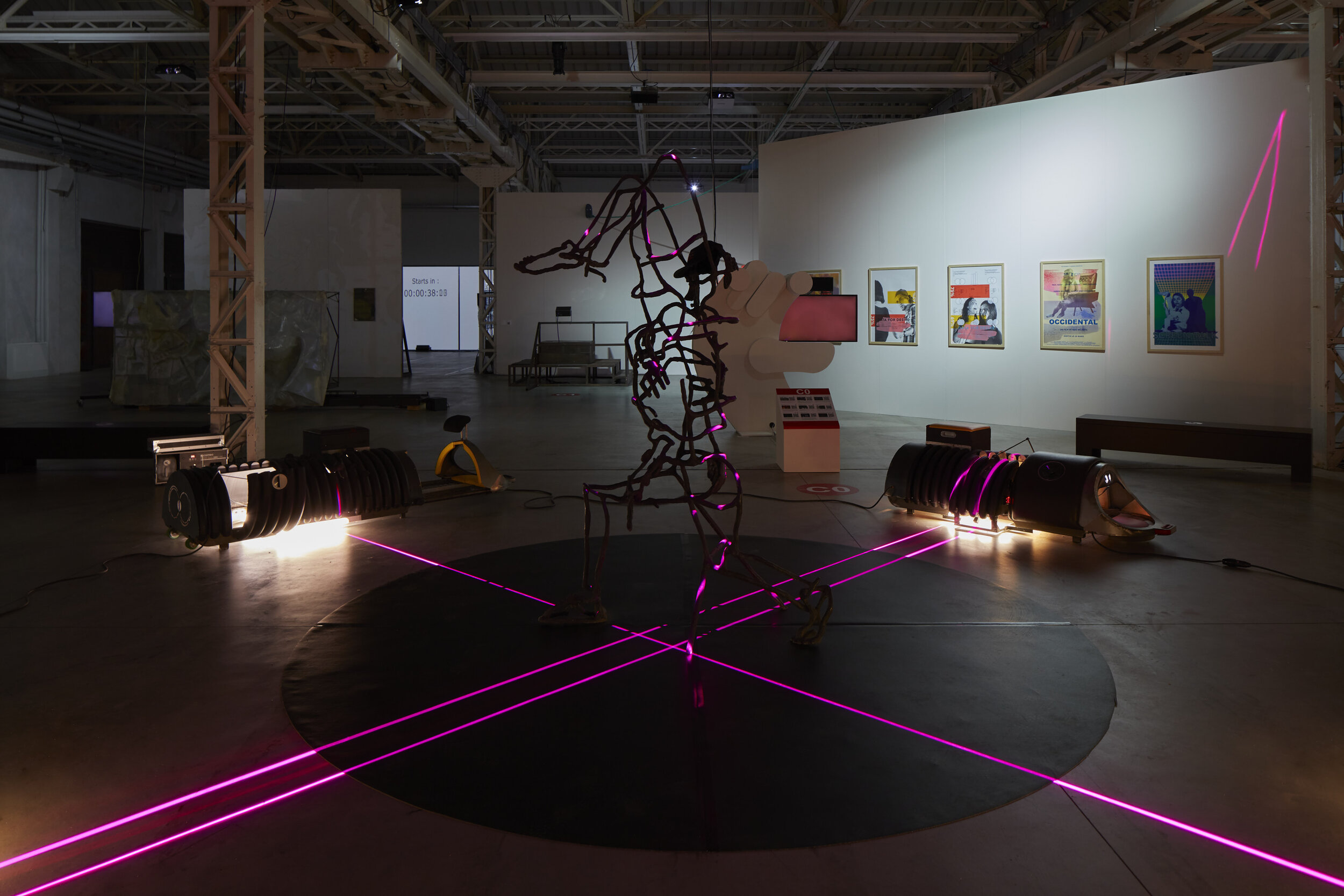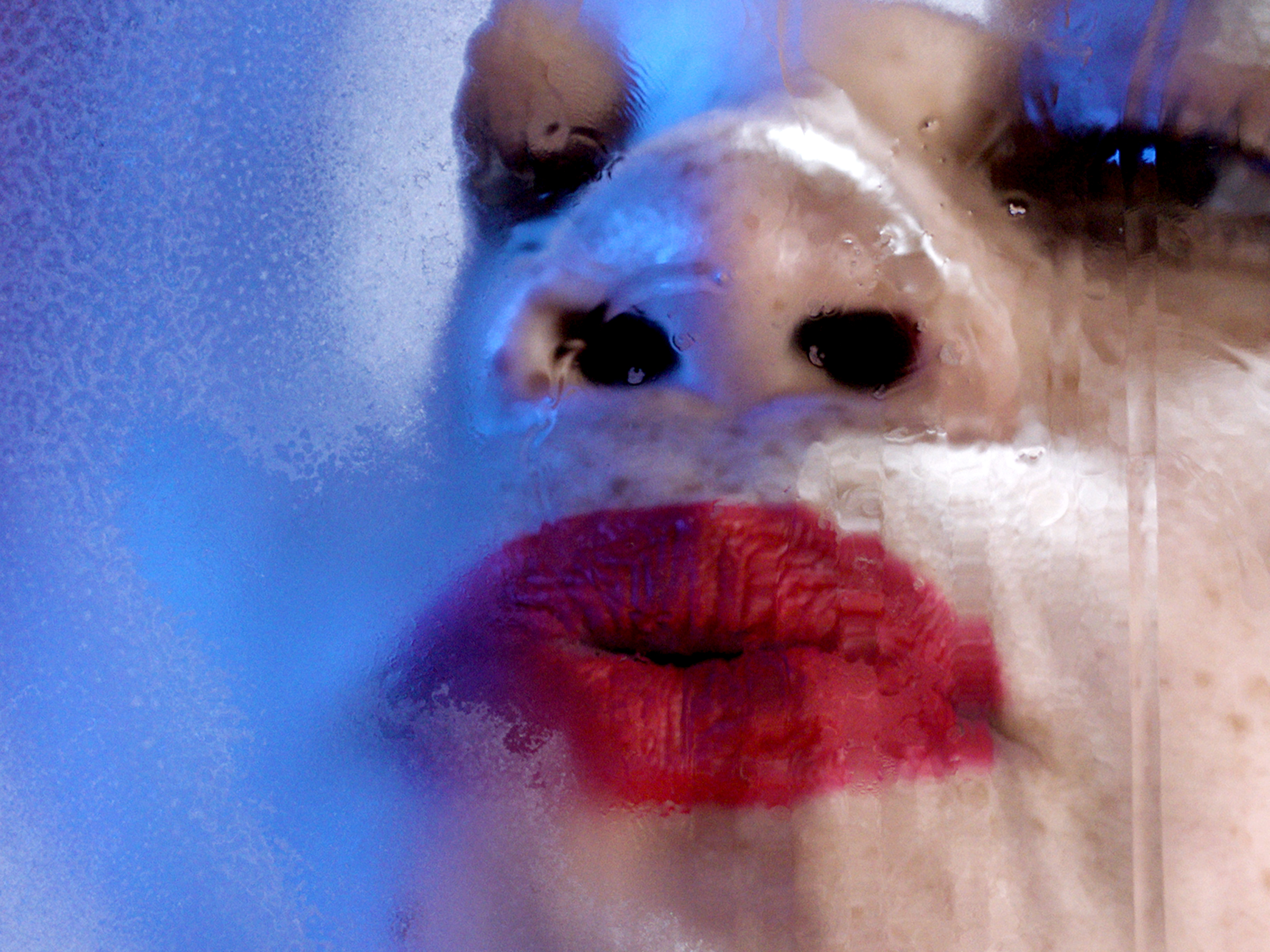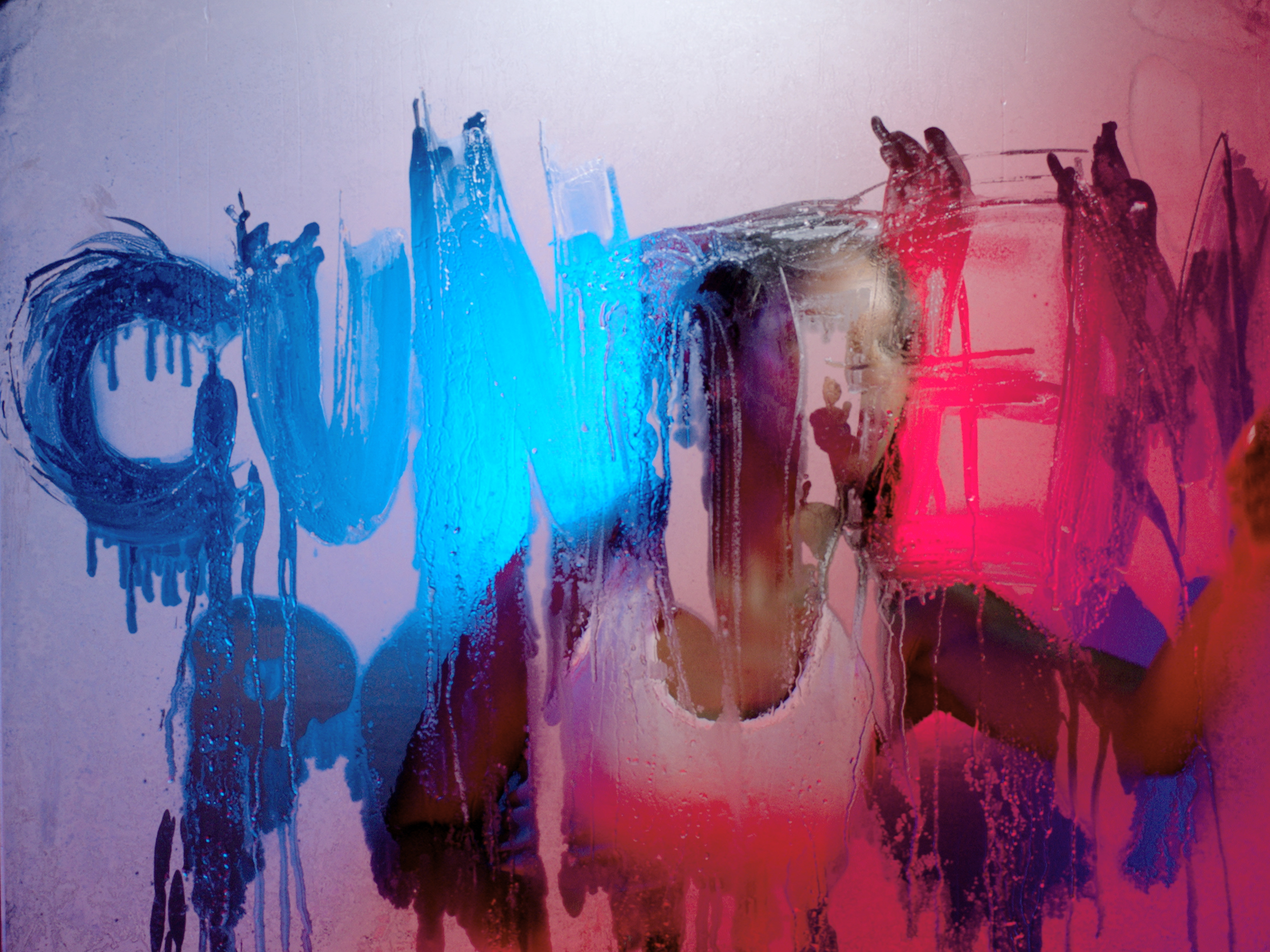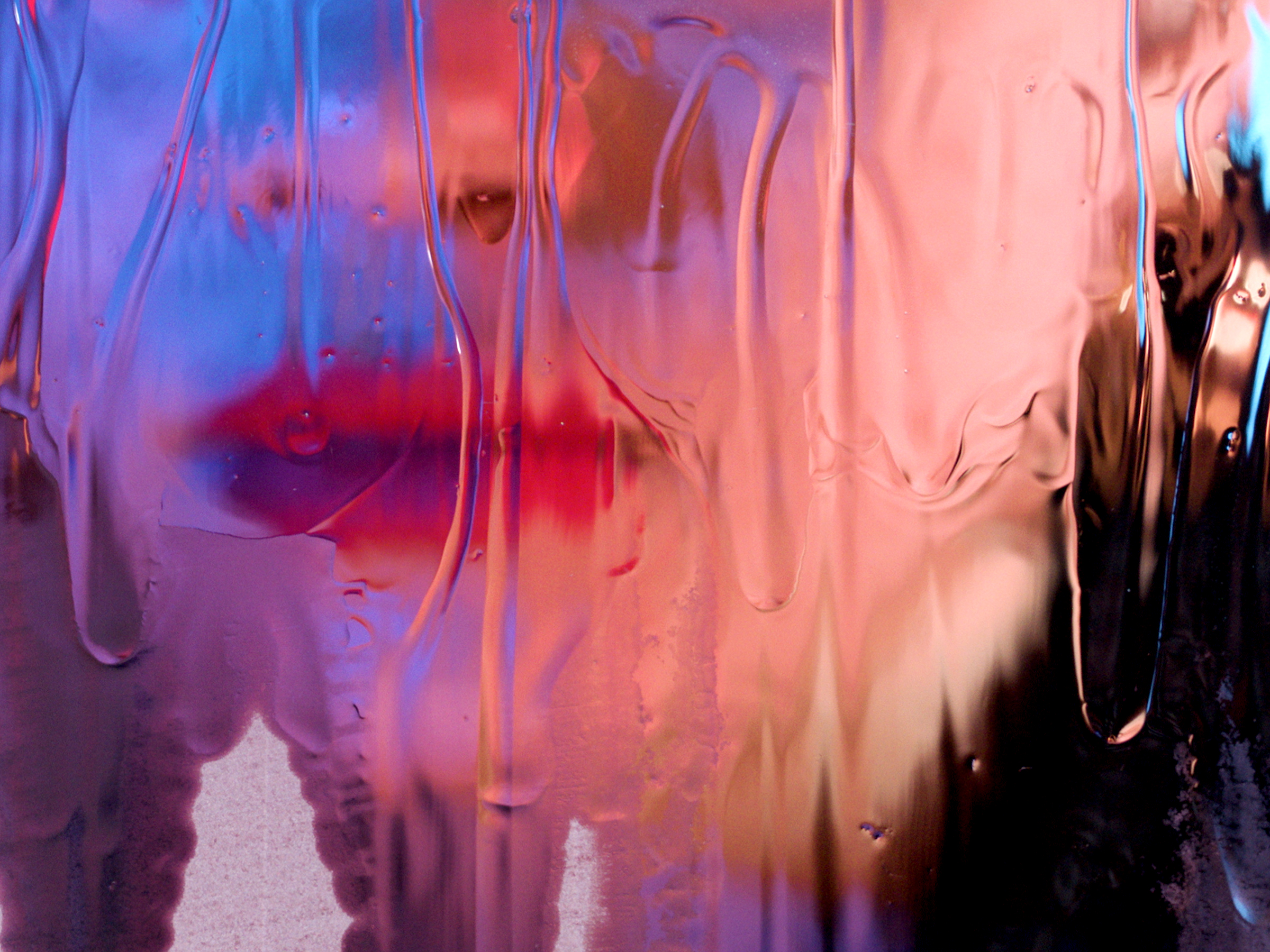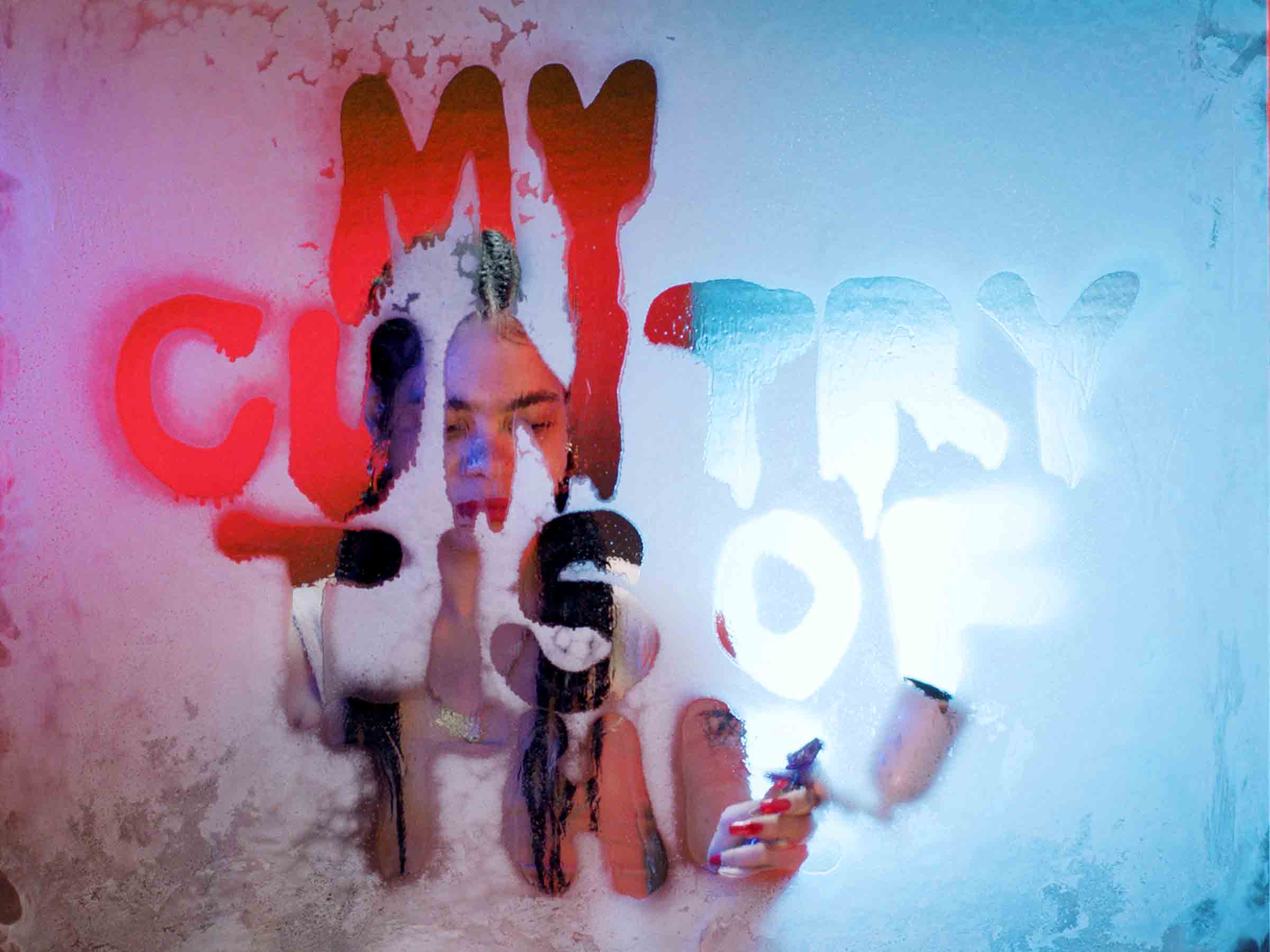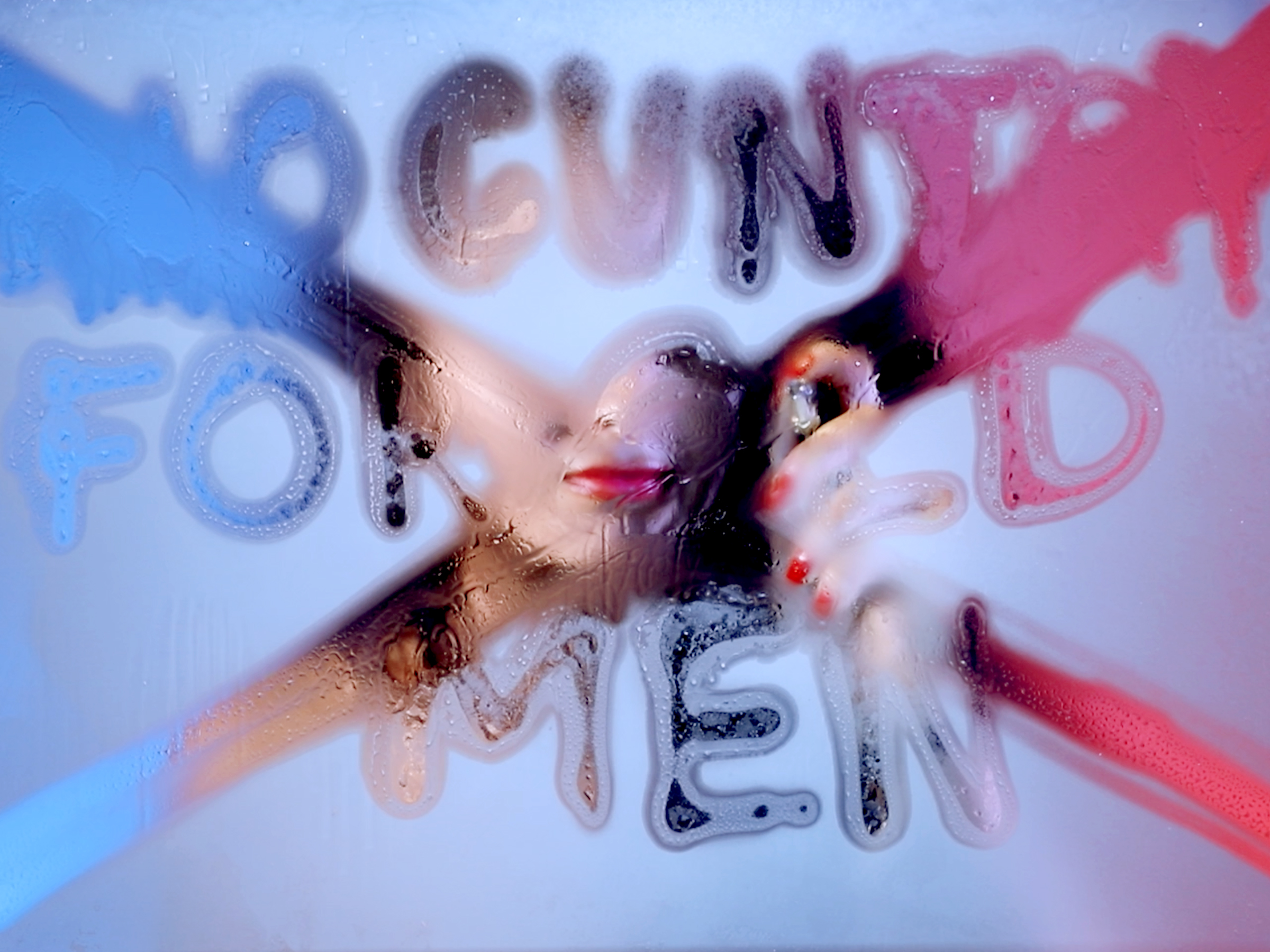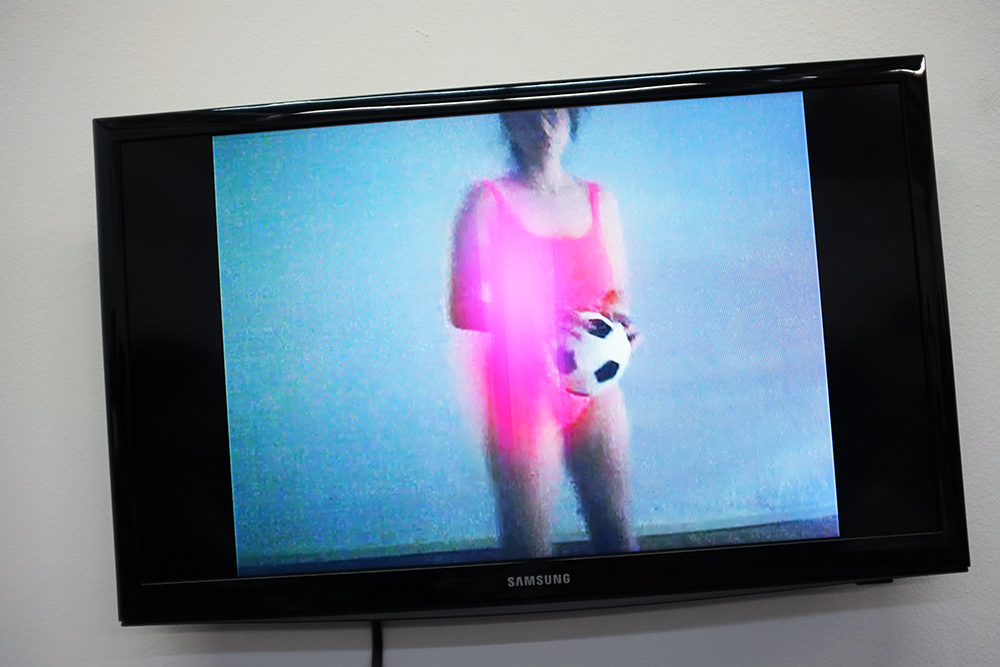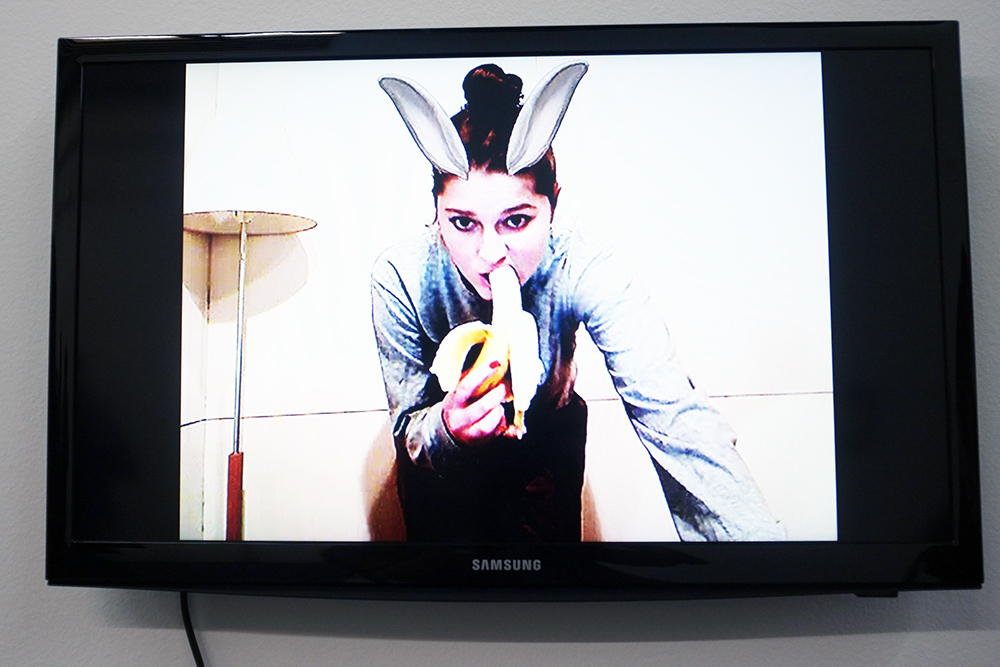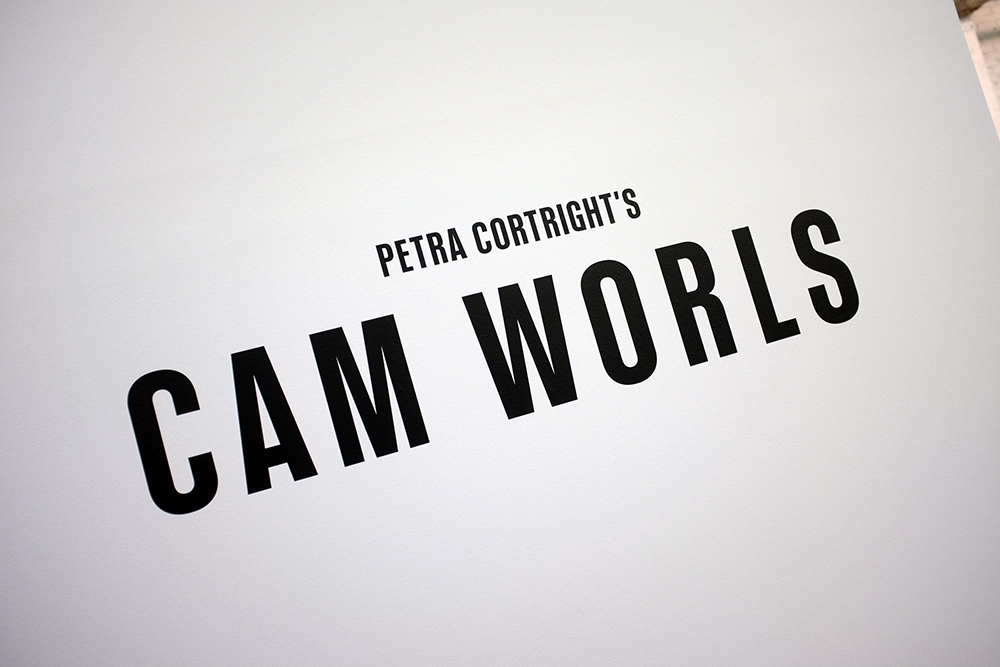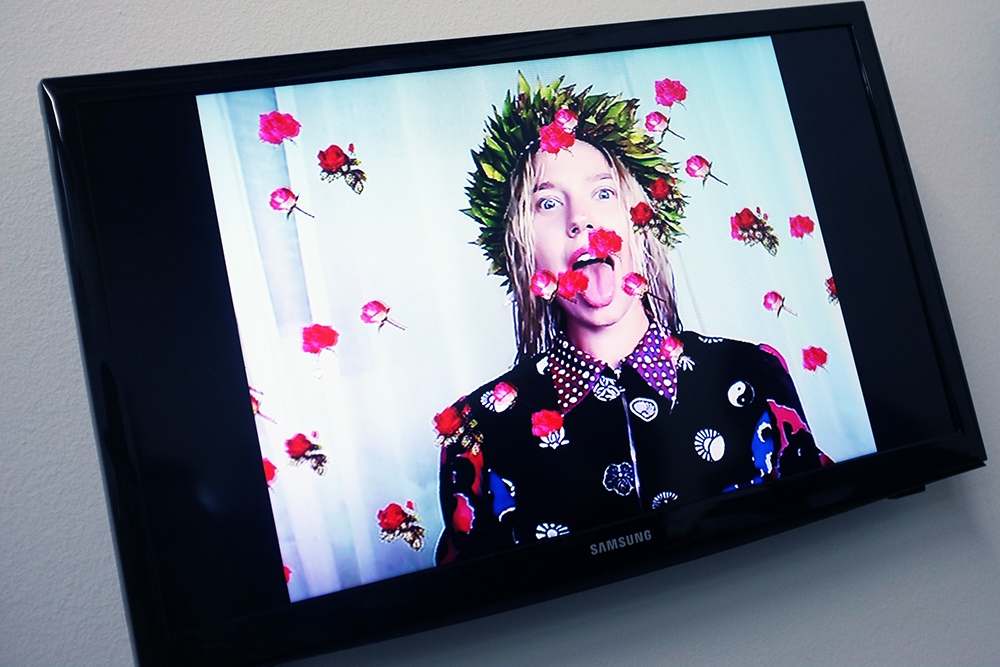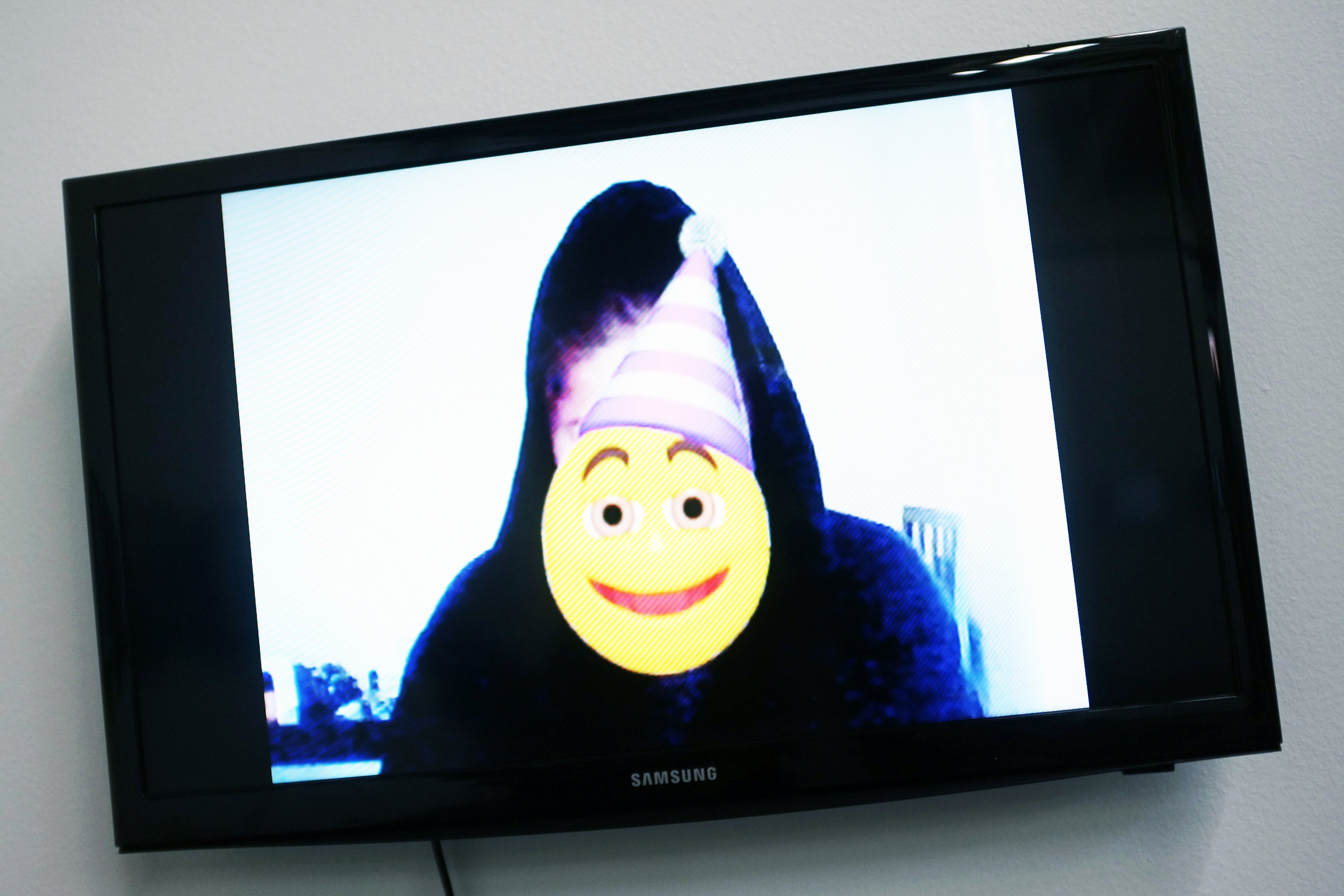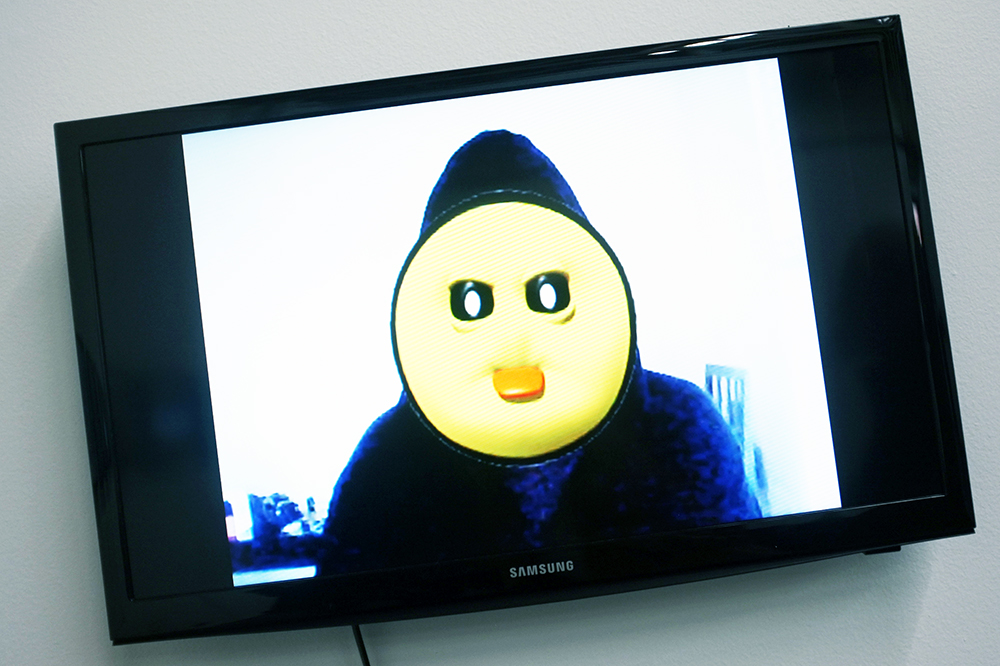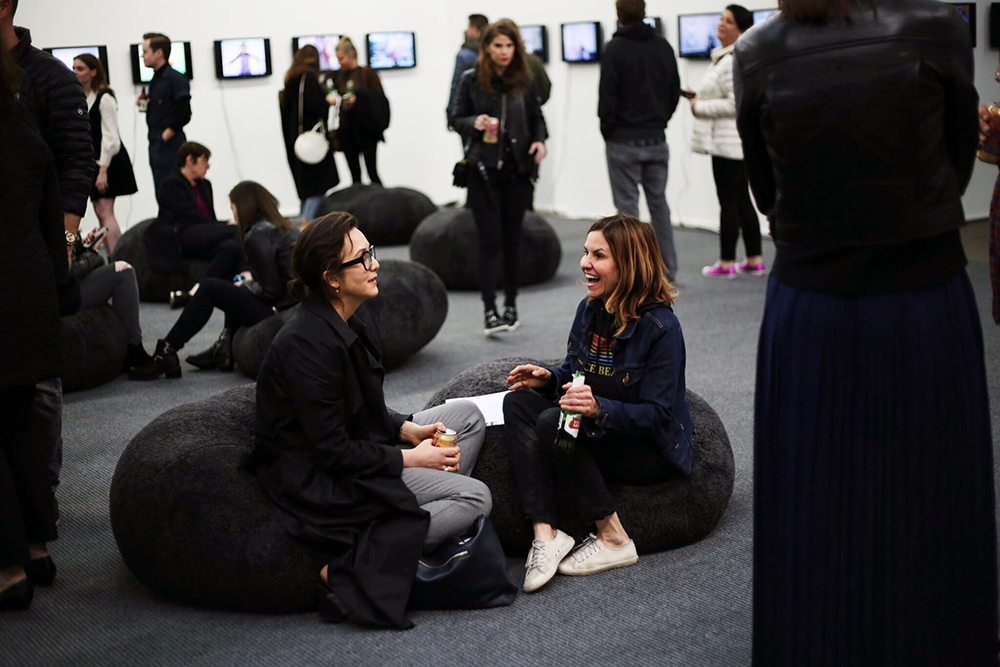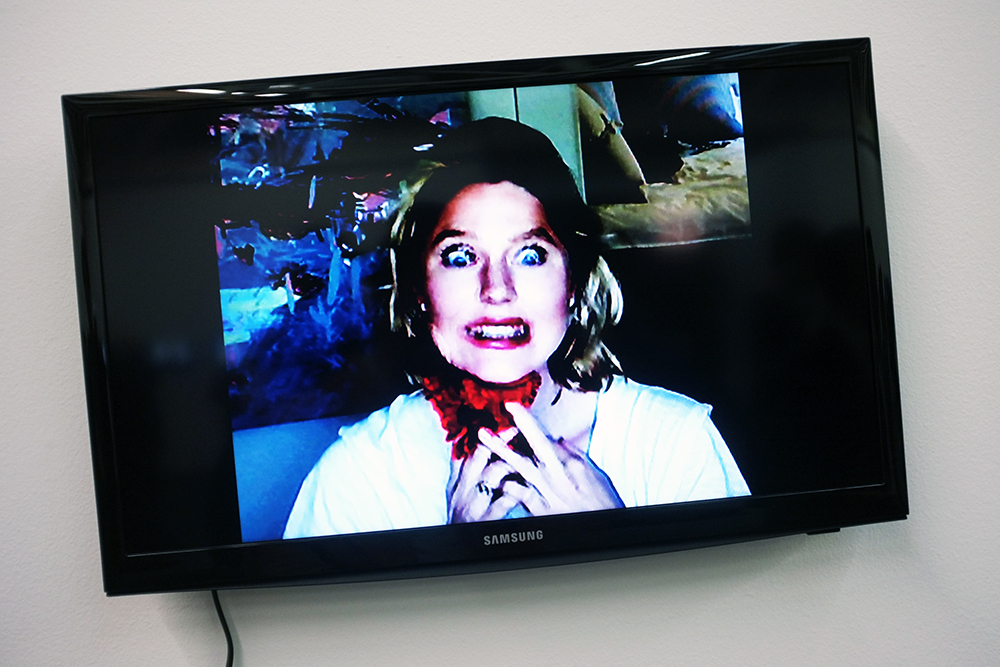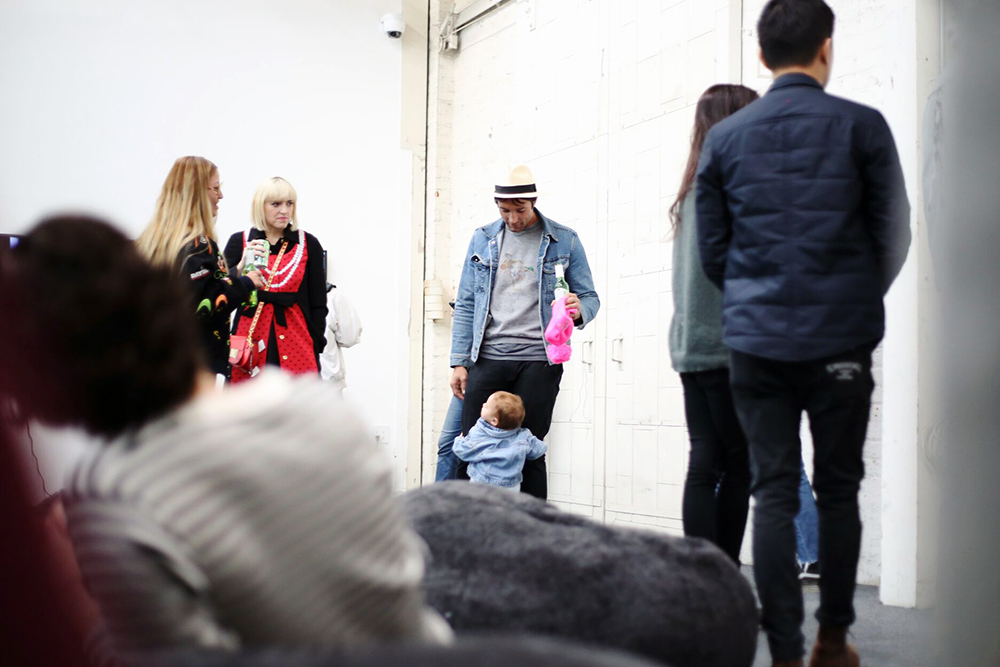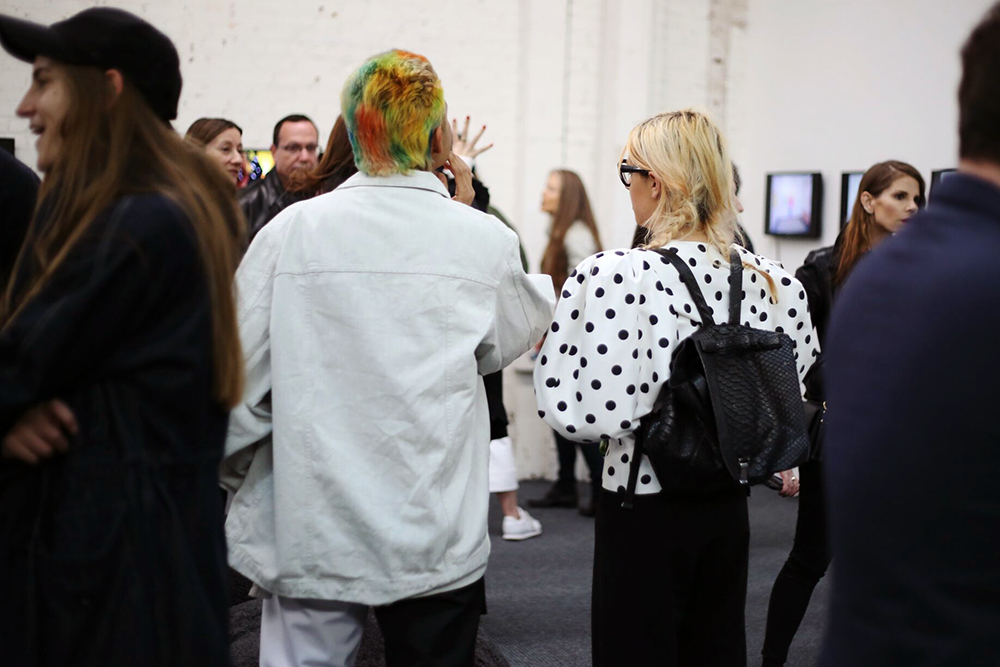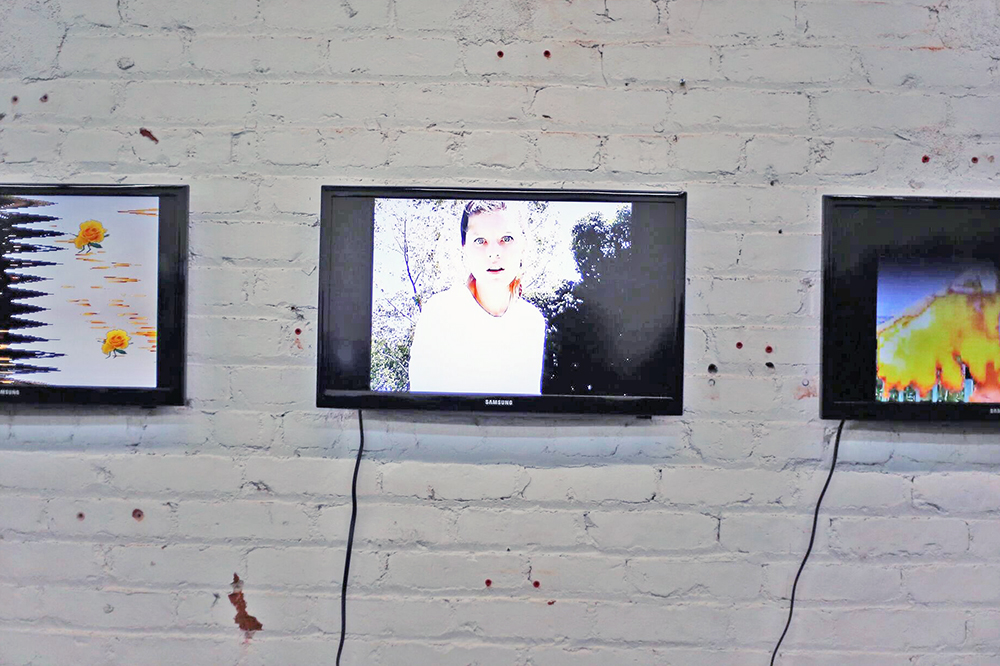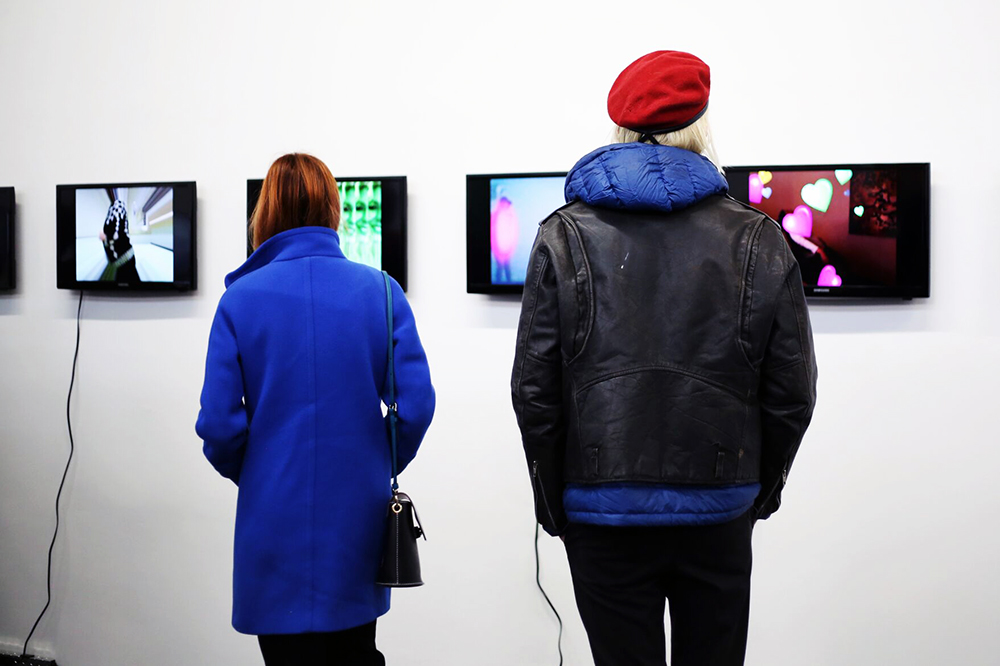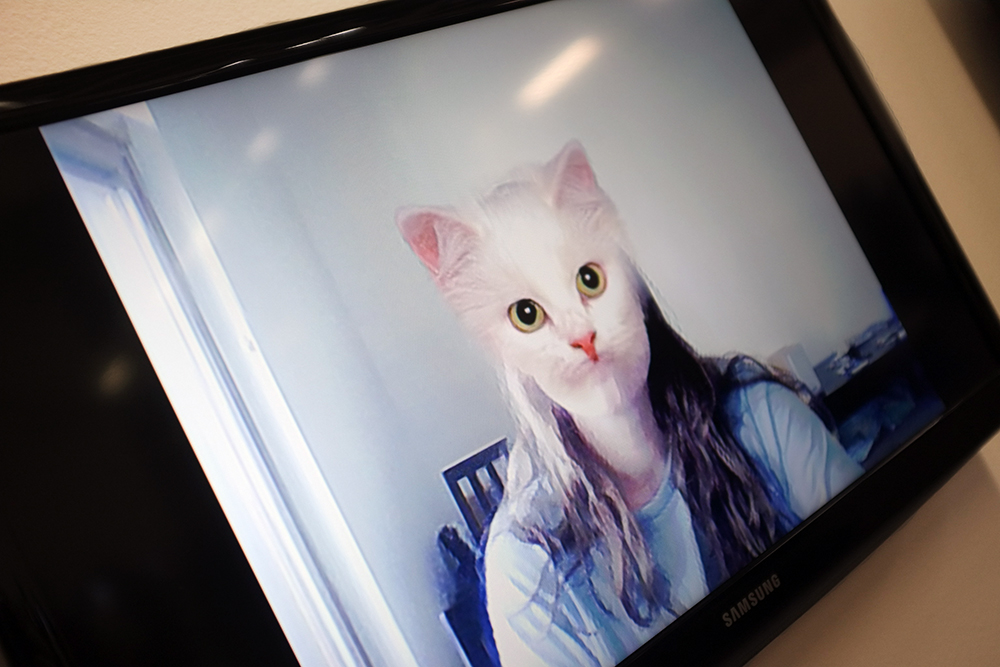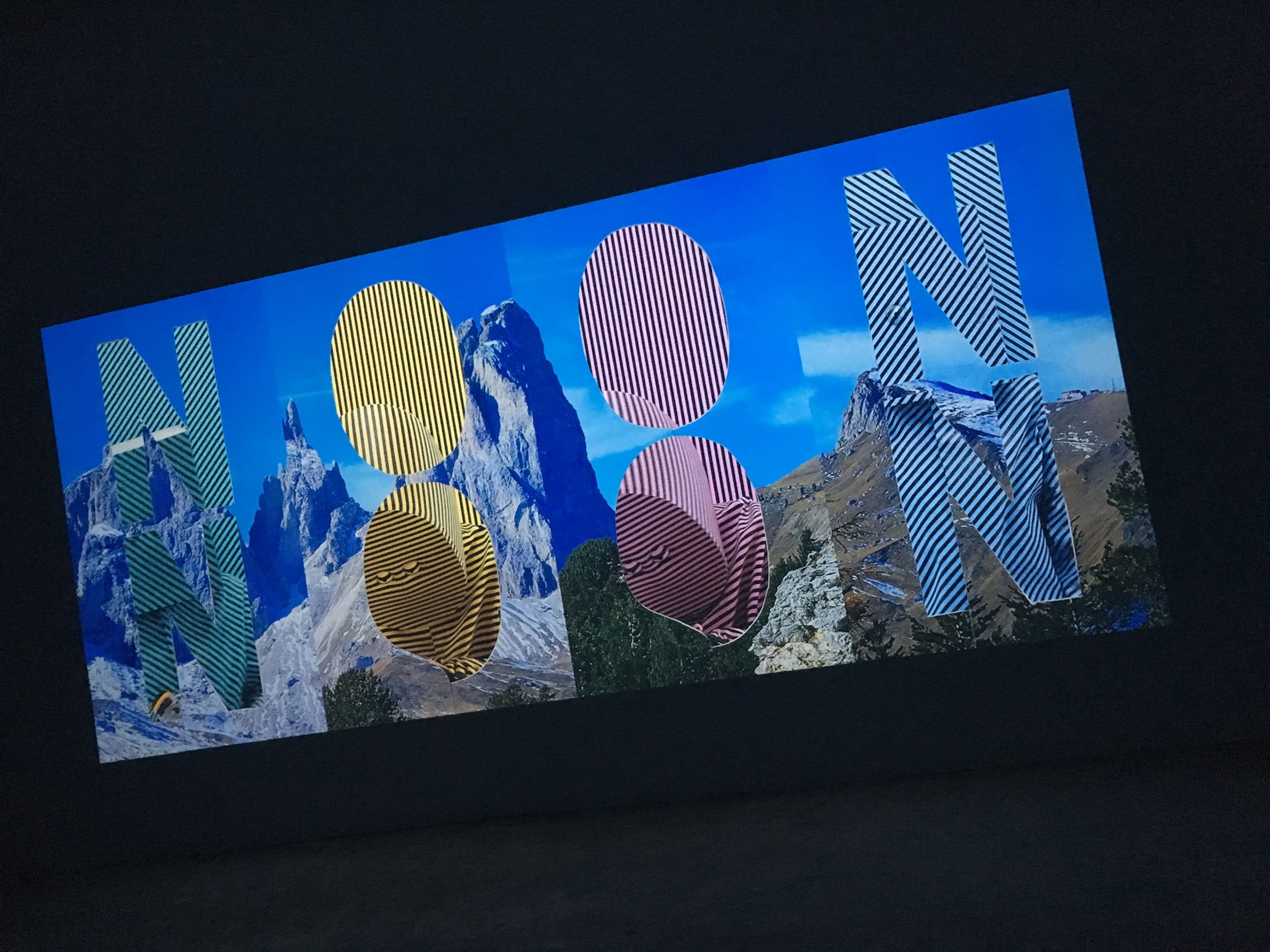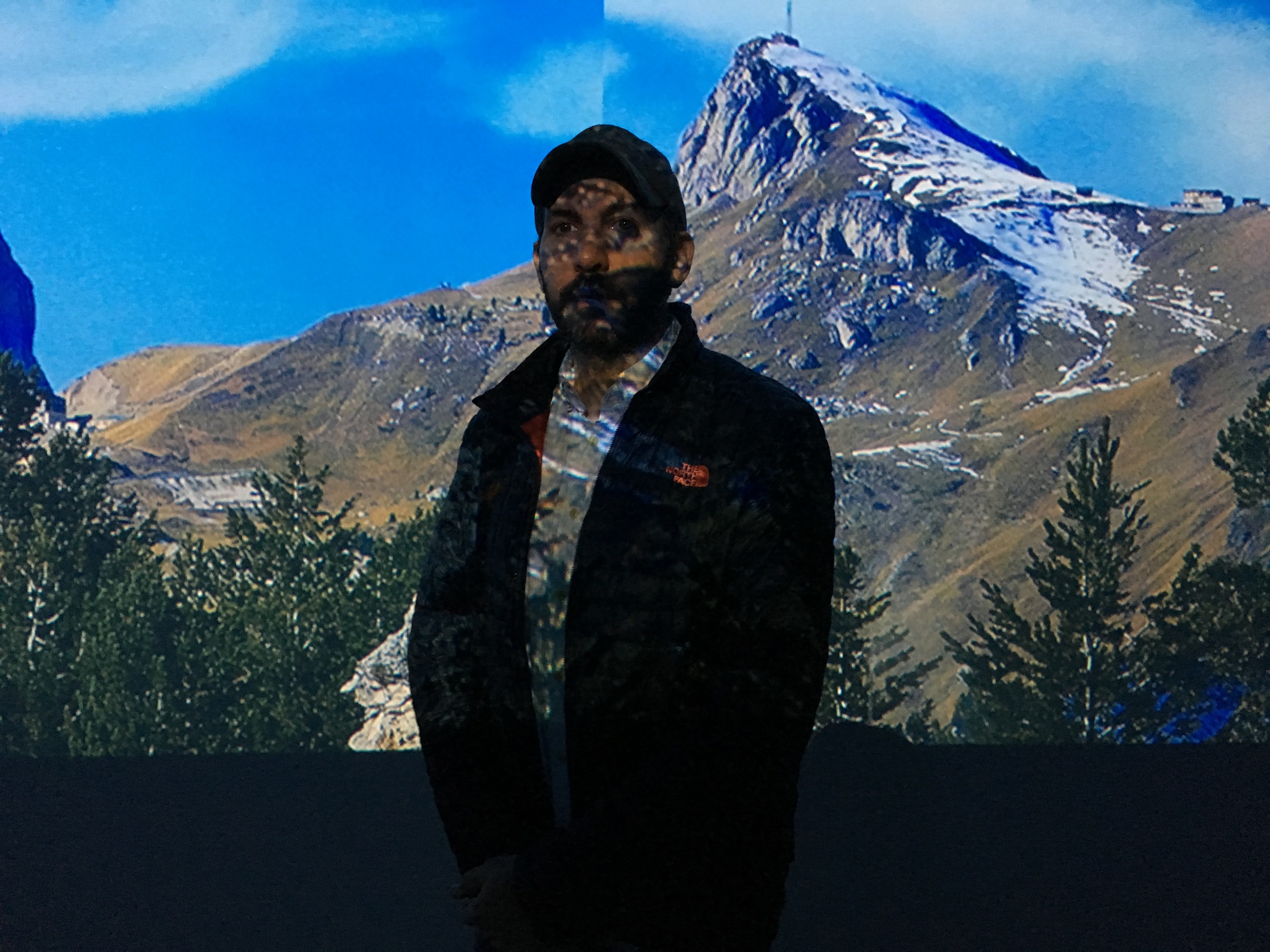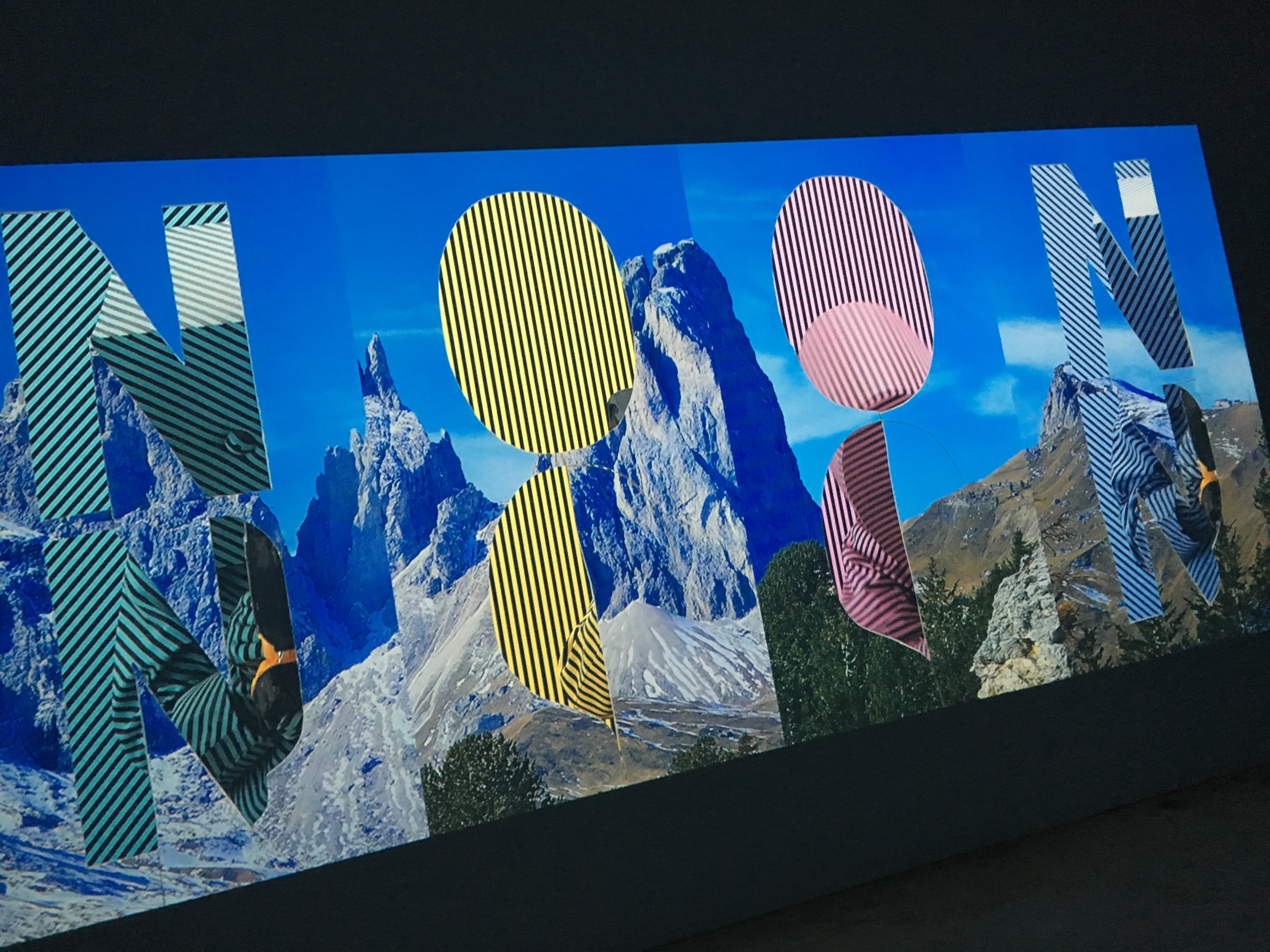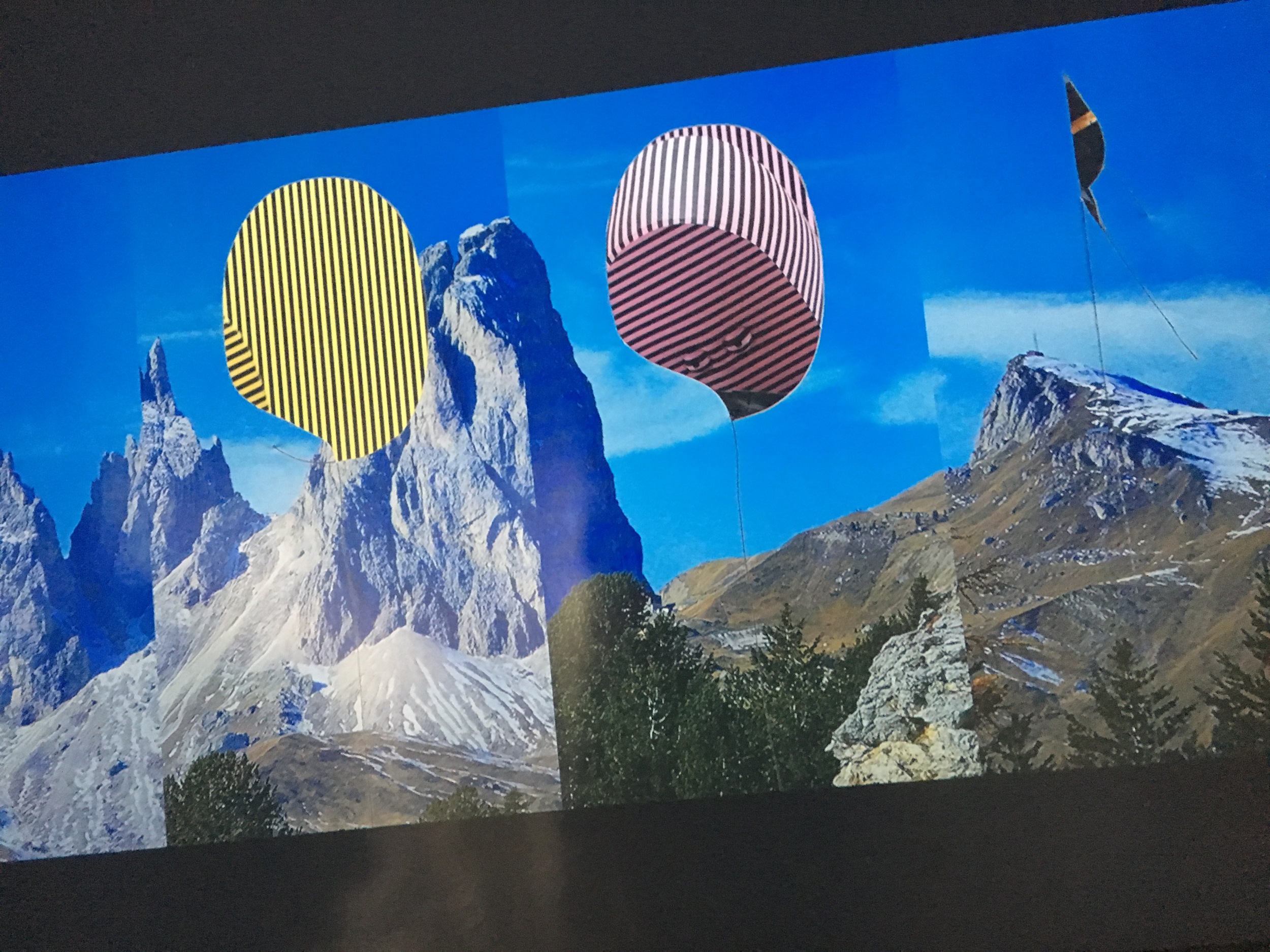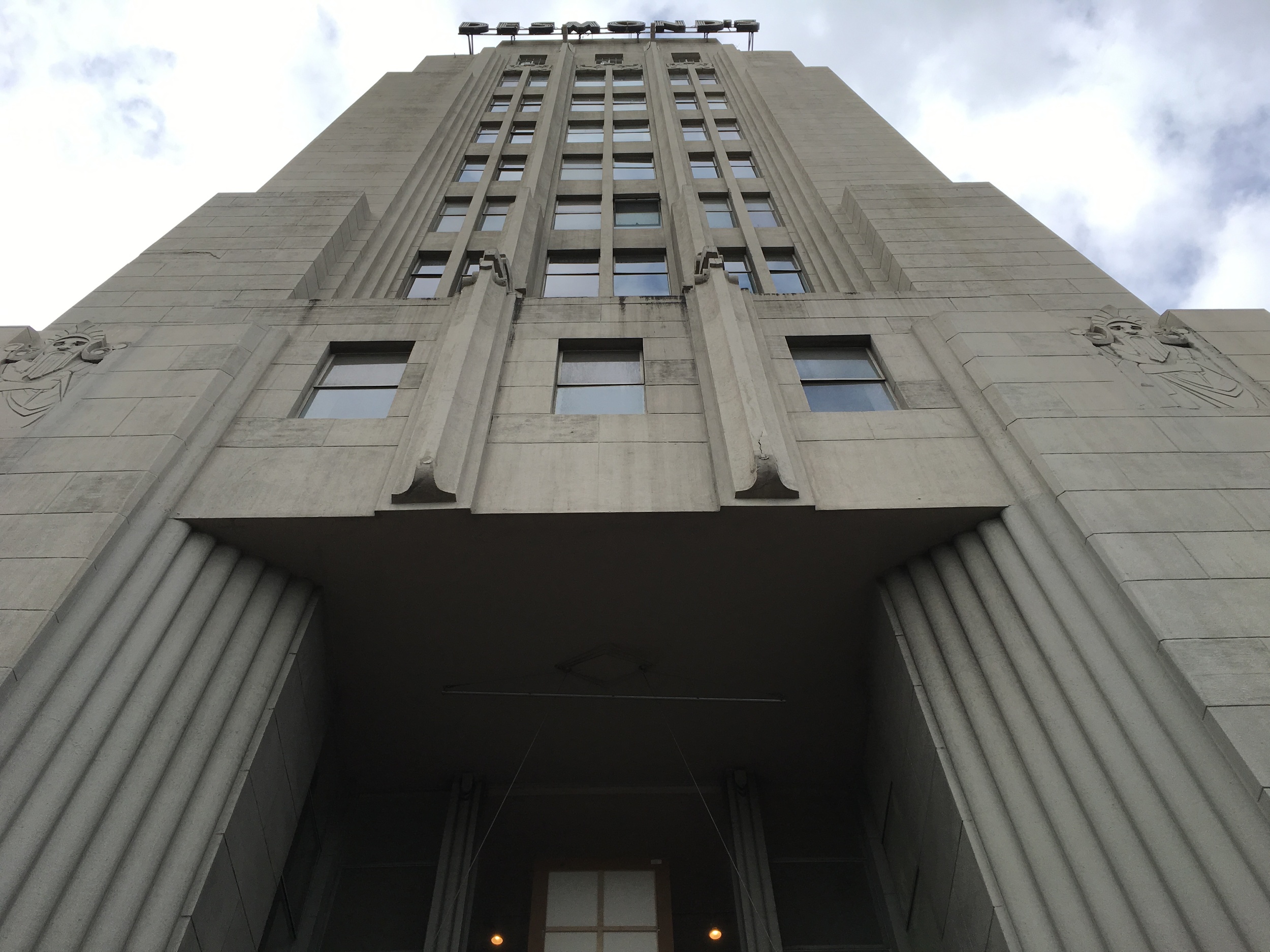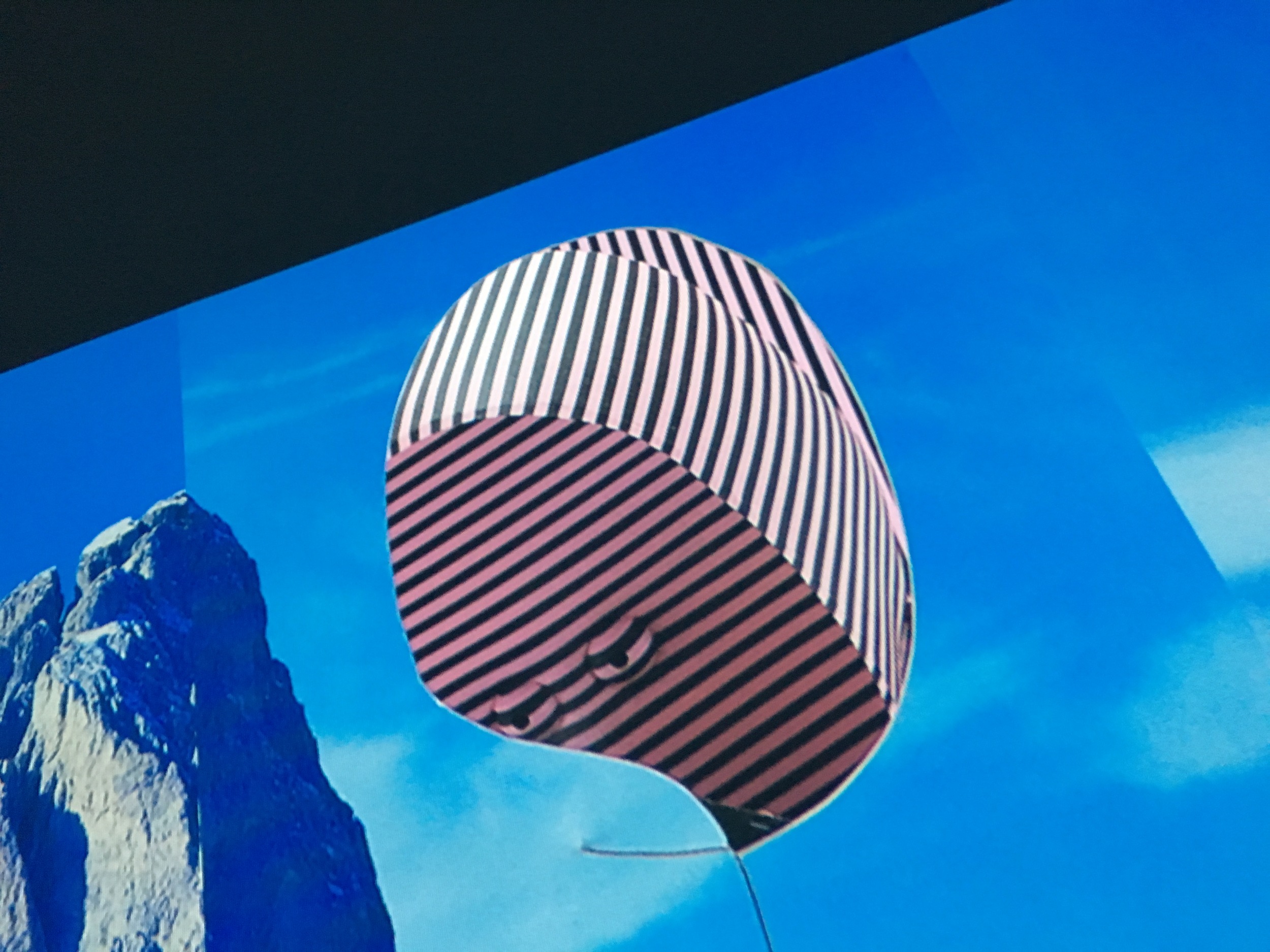View of ‘Global Fascisms.’ Image by Matthias Völzke
text by Arlo Kremen
At Haus der Kulturen der Welt, Global Fascisms is a mudslide. A terrific force leaking from a small alcove on the main floor downstairs, littering its debris across two gallery spaces and the hall that adjoins them. Quite literally too expansive to cleanly contain, artworks fill any available nook and cranny with just enough room and privacy to distinguish one series or individual work from another. With all wall text relegated to an optional booklet, the exhibition leans into this eclecticism—nameless, authorless, materialless works sharing spaces with no beginning or end, as though they are merely artifacts of the fascistic social conditions to which each work refers.
In this regard, Mithu Sen’s piece Unlynching: You never one piece (2017–) acts as a microcosm of the show’s sense of anonymity. Sen displays a variety of objects on a white wall behind glass with years penciled in next to broken mirror shards, bronze tools, and other ephemera. The piece refers to the violent uproars that have continued each year since the British partition of India in 1947, instilling ethnonationalism into the borders of an ethnically diverse people to enforce concepts of a pure national ethnicity. Sen’s objects were found in sites of ethnic conflicts, each speaking to the ever-present ripples of violent terror British colonialism left in its wake.
Mithu Sen
Unlynching: You never one piece, 2017—
Found objects and pencil
Courtesy of the artist
It is crucial to mention, if not already assumed, that the show’s definition of fascism is quite loose and does not fix the ideology to governmental institutions alone. HKW displays works concerning many facets of fascism and artist responses to fascism across time, from literal governmental suppression to symptoms of fascism on the internet, as well as in religious and subcultural contexts. Underscoring its breadth, the show traverses space and time with an aim: to locate the look and sound of fascism.
Walking through the show, a sense of desperation palpates. And rightly so. It feels as though there is no end to the pockets of fascism deserving of a rigorous aesthetic investigation, and yet, the show has a deadly, bleeding gash. A lapse so severe, it has impregnated every inch of the exhibition. An unfortunate predictability of a German institution, the Gazan genocide lingers as a specter. Palestine has one representative in the show from the Jerusalem-based painter Sliman Mansour, but the occupied Palestinian people are also mentioned in one work by Israeli artist Roee Rosen titled The Gaza War Tattoos (2024–2025).
Roee Rosen
Night Skies with Full Moon, 2024
Photograph
Courtesy of the artist
Rosen’s series shows a set of tattoos in reference to the ongoing “war” in Gaza. It features different tattoos recalling the deaths of Gazans and their means, such as the “mosquito” military procedure that uses human shields, and another tattoo, The Dreadful Dreidel, detailing the different titles the IDF uses to describe its military violence against Palestinians. Without question, Rosen is concerned with Israeli violence against Palestinians and is in active protest against its historic military campaign, and yet, why choose an Israeli artist over a Palestinian? The Gaza War Tattoos is one of the first works in the largest display space of the show, while Mansour’s prints are tucked away in a far less populated section, by both people and artworks. A bizarre decision for sure to prioritize an Israeli artist’s discussion of Israeli militarism over Palestinians, and yet, this has been a familiar rhetoric among not-quite-anti-zionist liberals and zionist progressives, if such a thing can even exist, who, over the voices of Palestinians and their political accomplices, use the image of anti-war protests in Israel as evidence that a morally sound Israel of the future is possible. What should be the prioritized subjectivity vanishes in an institutional disappearing act.
Sliman Mansour
Camel of Hardship, 1973
Print on paper
58 cm x 37.5 cm
Courtesy of Zawyeh Gallery
Mansour’s prints all predate the ongoing genocide, with the latest being from 2021, Olive Picking. Mansour’s work engages in the history of Palestinian resilience in the face of displacement, representing the lives of Palestinians, not under war or direct abuse, but in their perseverance to live their daily lives. Whether it be a woman picking olives, as in Olive Picking, or the variegated activities of a village scene overlaid in The Village Awakens (1987), he demonstrates life under occupation. This is particularly notable in Camel of Hardship (1973), where a Palestinian man schleps Jerusalem on his back, but in each careful portrait, his treatment of line and color radiates with hopeful futurity. Mansour’s work is wonderful and a worthy contour to a show concerning fascism; however, his placement in the show feels like a quota fulfillment—or a solution to institutional censorship.
Daniel Hernández-Salazar
The Traveler, 2013
Photograph on wallpaper
440 cm x 660 cm
Courtesy of the artist
Blown up to the size of the wall, the photo The Traveler (2013) by Daniel Hernández-Salazar captures a recurring motif of an angel whose wings are digitally edited, unearthed shoulder blades of unidentified victims of the Guatemalan civil war. The angel sets his hands around the shape of his open mouth with the words “SI HUBO GENOCIDIO” (IF THERE WAS GENOCIDE) in large typeface at the top of the image. In 2013, former president of Guatemala Efraín Ríos Montt was sentenced to eighty years in prison for genocide and crimes against humanity. During the trial, Hernández-Salazar imprinted this motif on the back of public buses in Guatemala City as pro-Montt revisionists attempted to silence archivists and activists dedicated to his sentencing.
The placement of The Traveler is perpendicular to Mansour’s prints. The relationship between the works cannot be a coincidence—a work concerning the censorship of activists and the need to acknowledge and provide justice for the victims of genocide sits beside paintings about a people and land undergoing genocide and censorship. Assuming that HKW stipulated the absence of Palestinian art about the concurrent genocide and Israeli occupation because of Germany’s broad definition of antisemitism, this move by the curators is an ingenious maneuver—managing both to amplify Palestine through subtext, all while embedding HKW into the systems of fascism that the show aims to illustrate.
The absence of a Palestinian artist’s perspective on the genocide feels even more pointed given that the recurring medium of the show is video—the very medium by which this genocide has been broadcast on social media. The journalistic work of Korean filmmaker Yoonsuk Jung, commissioned by HKW for this show, is showcased in STEAL (2025). Created after the attempted imposition of martial law in South Korea, Yoonsuk Jung covers the eternal relationship between democracy, authoritarianism, and spectacle using footage from parliament assemblies, news outlets, and his own original shots. The artist works with the very media the Gazan genocide has been displayed to the West—and yet, Gaza appears only in the form of a tattoo.
Global Fascisms is on view through December 17th, 2025 @ Haus der Kulturen der Welt in Berlin, John-Foster-Dulles-Allee 10 10557, Berlin


